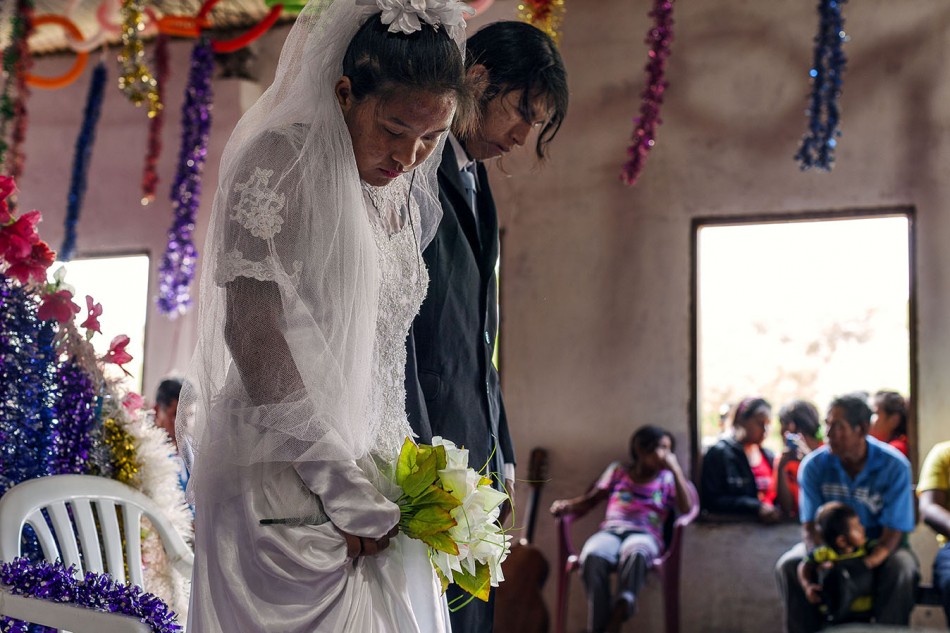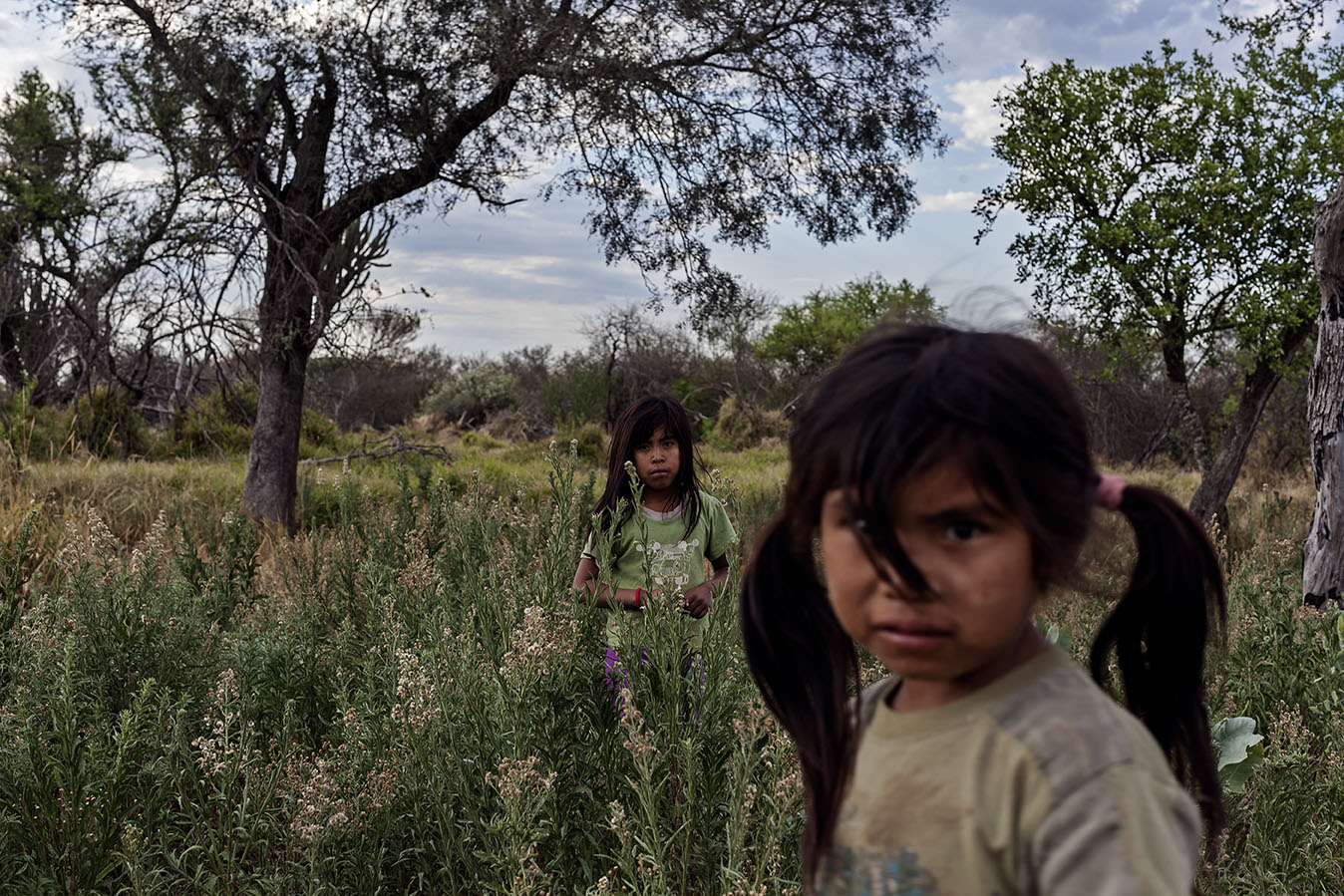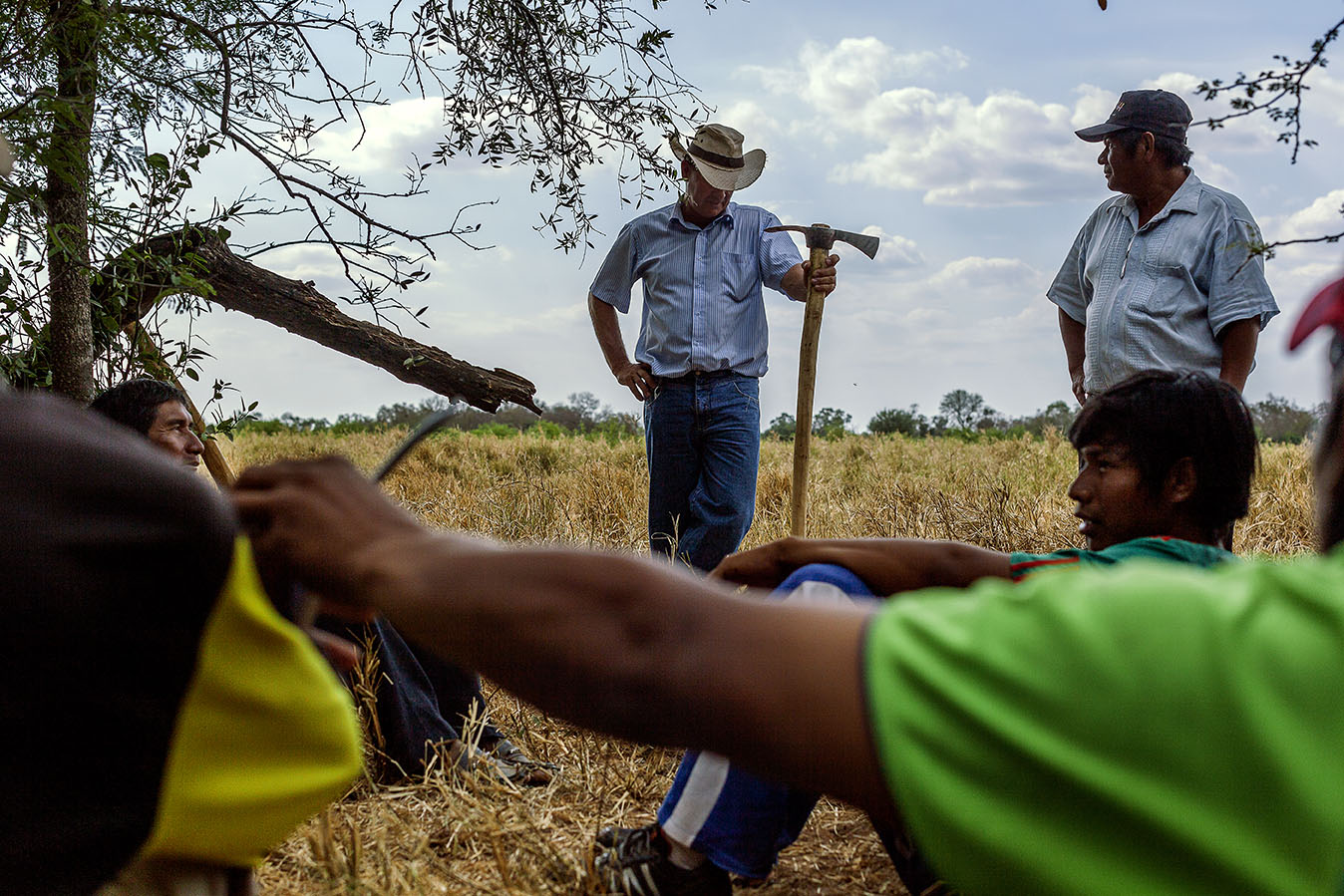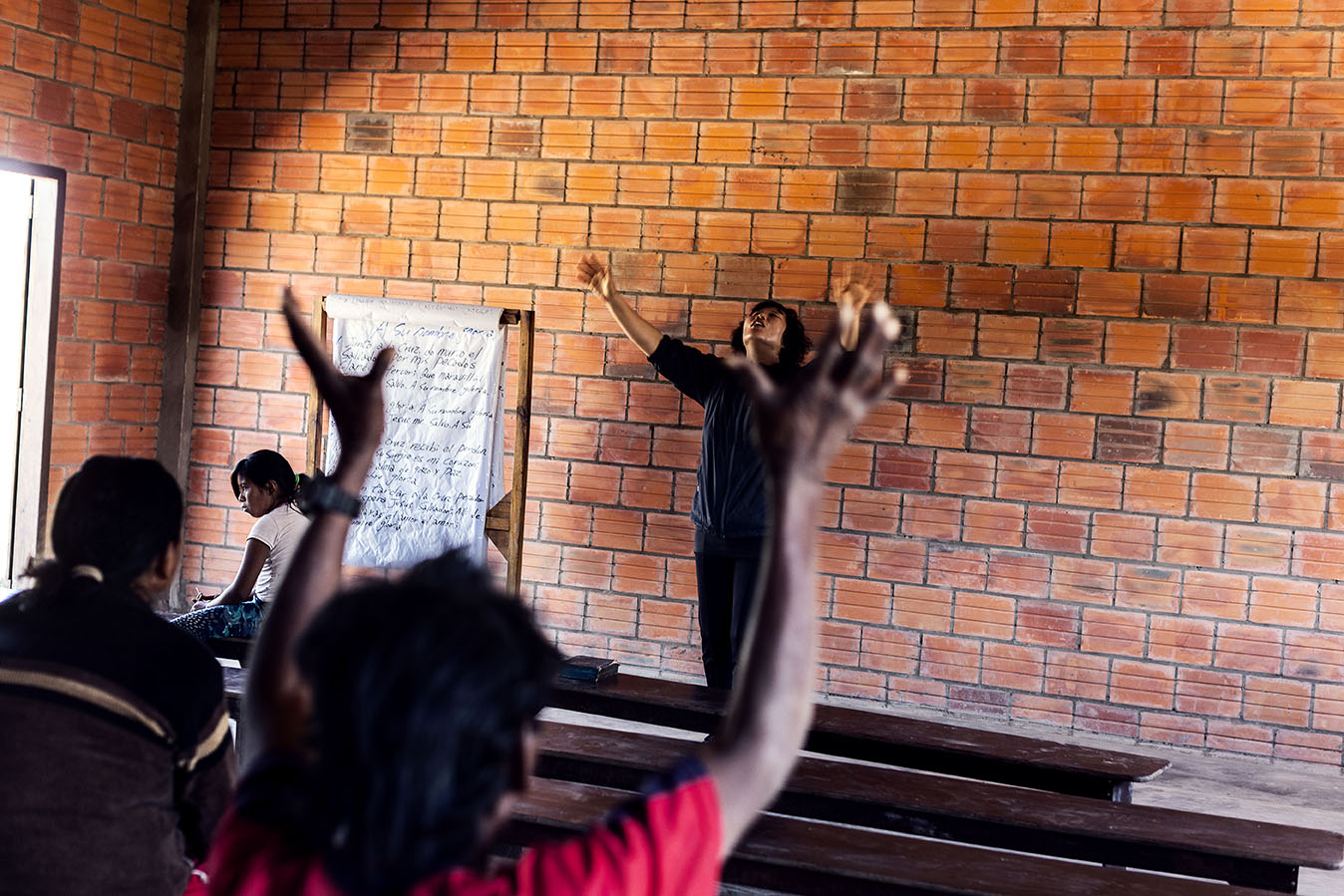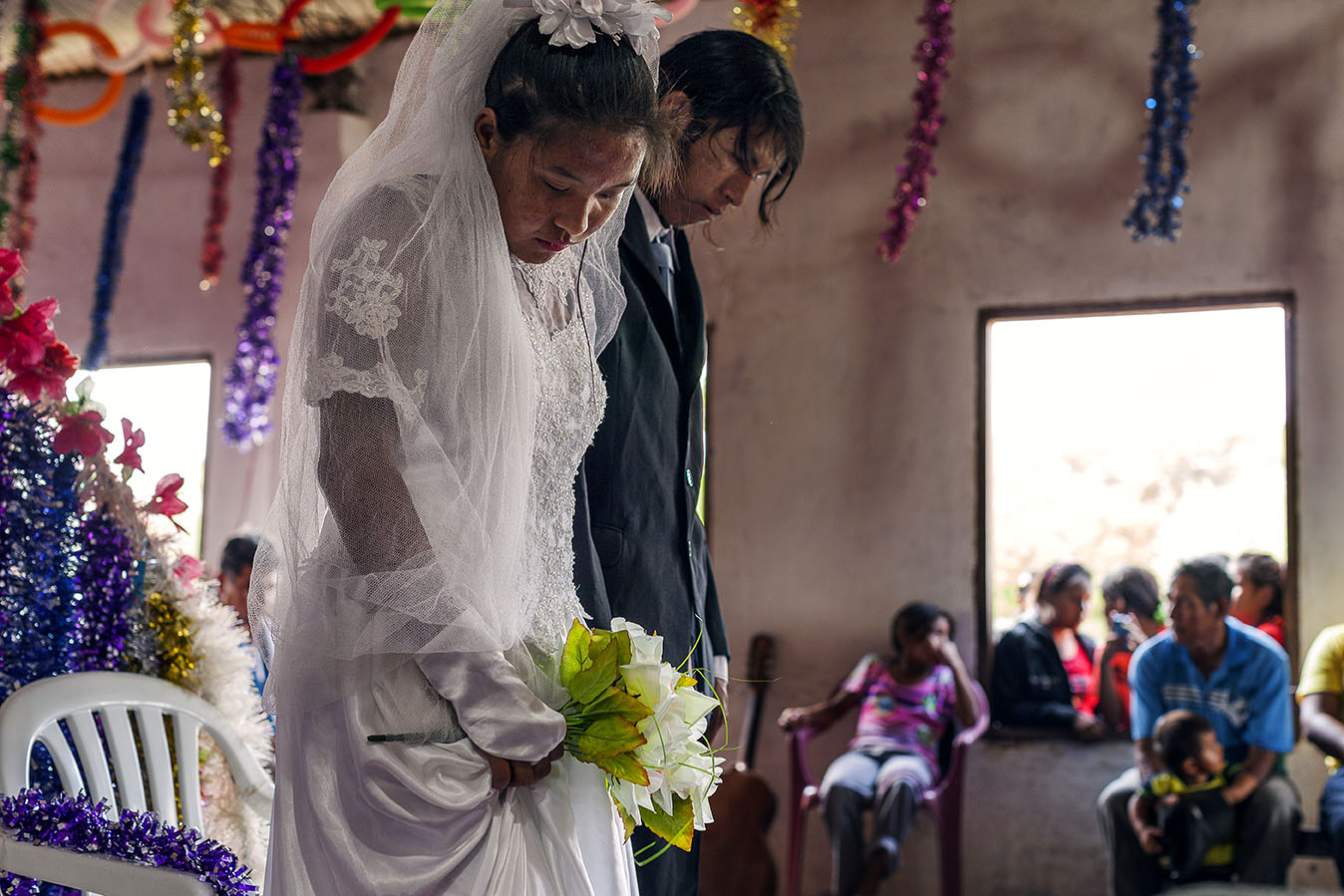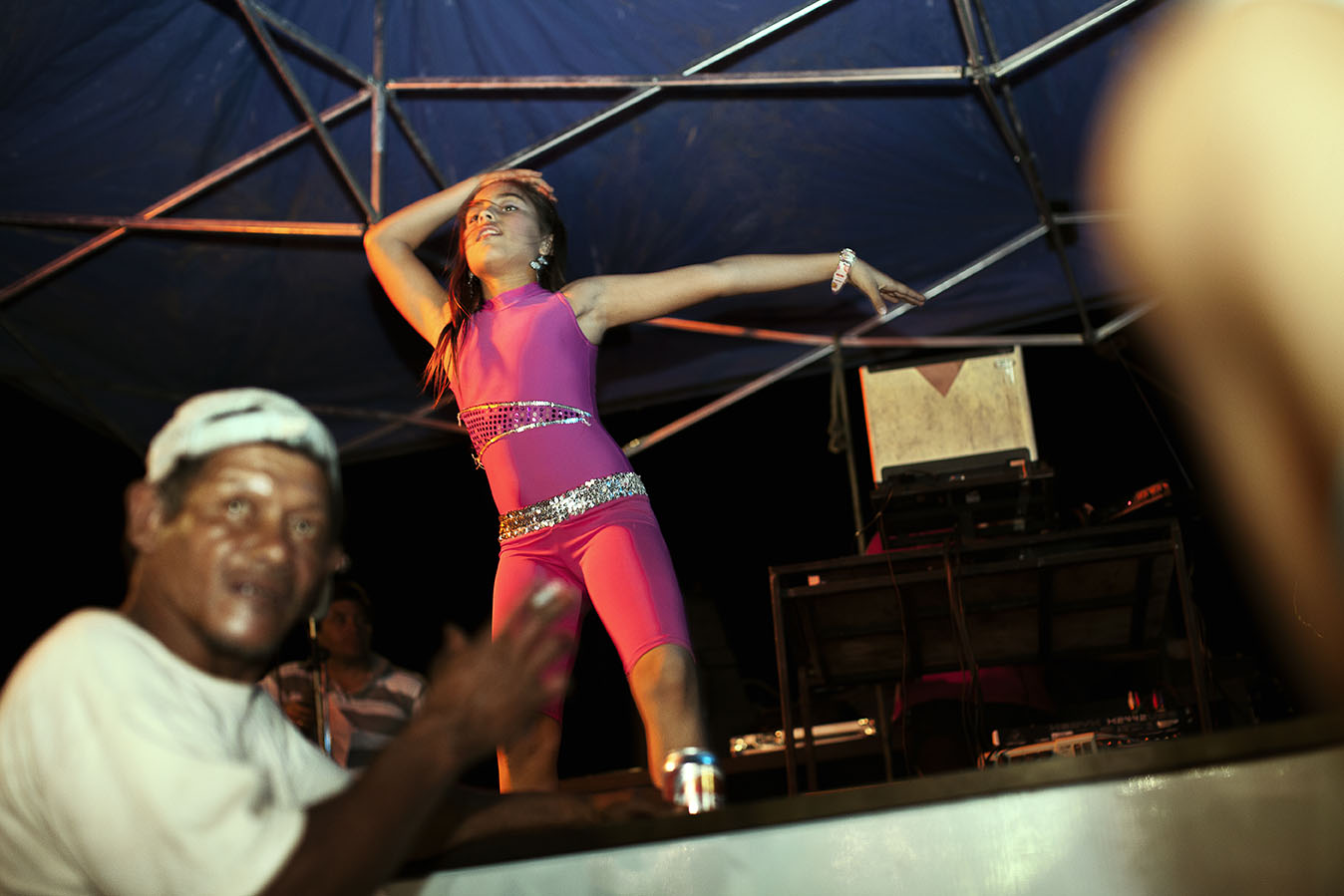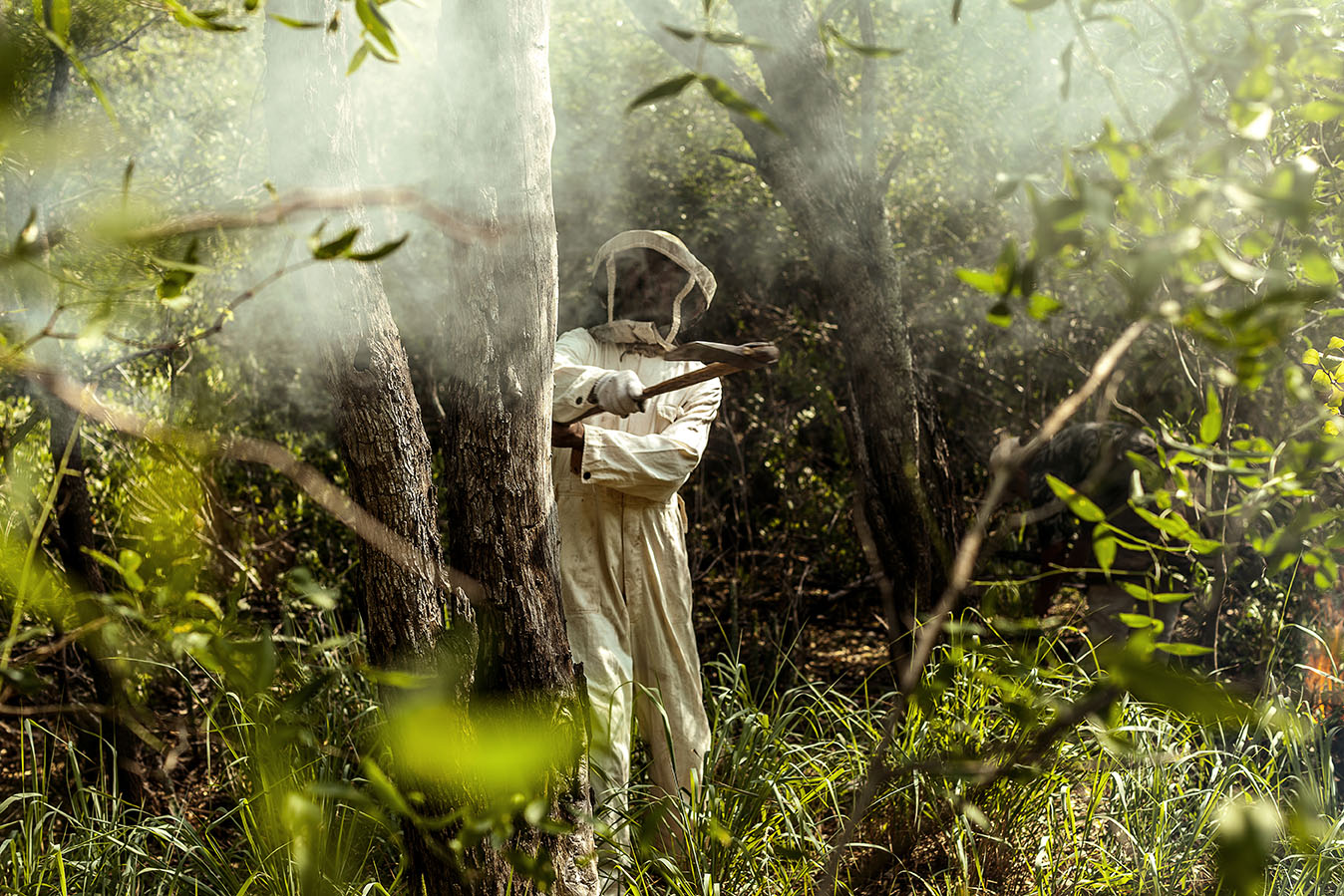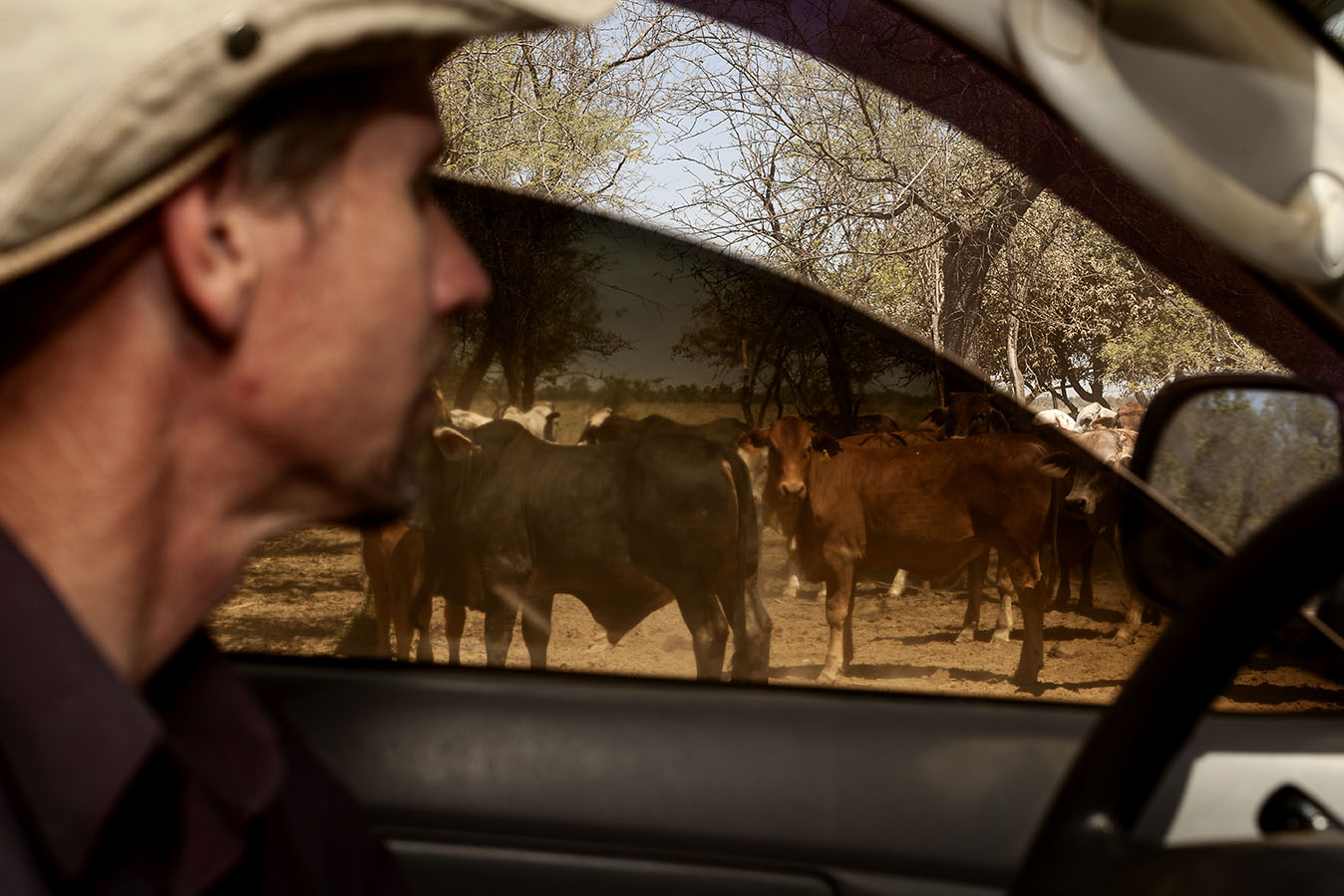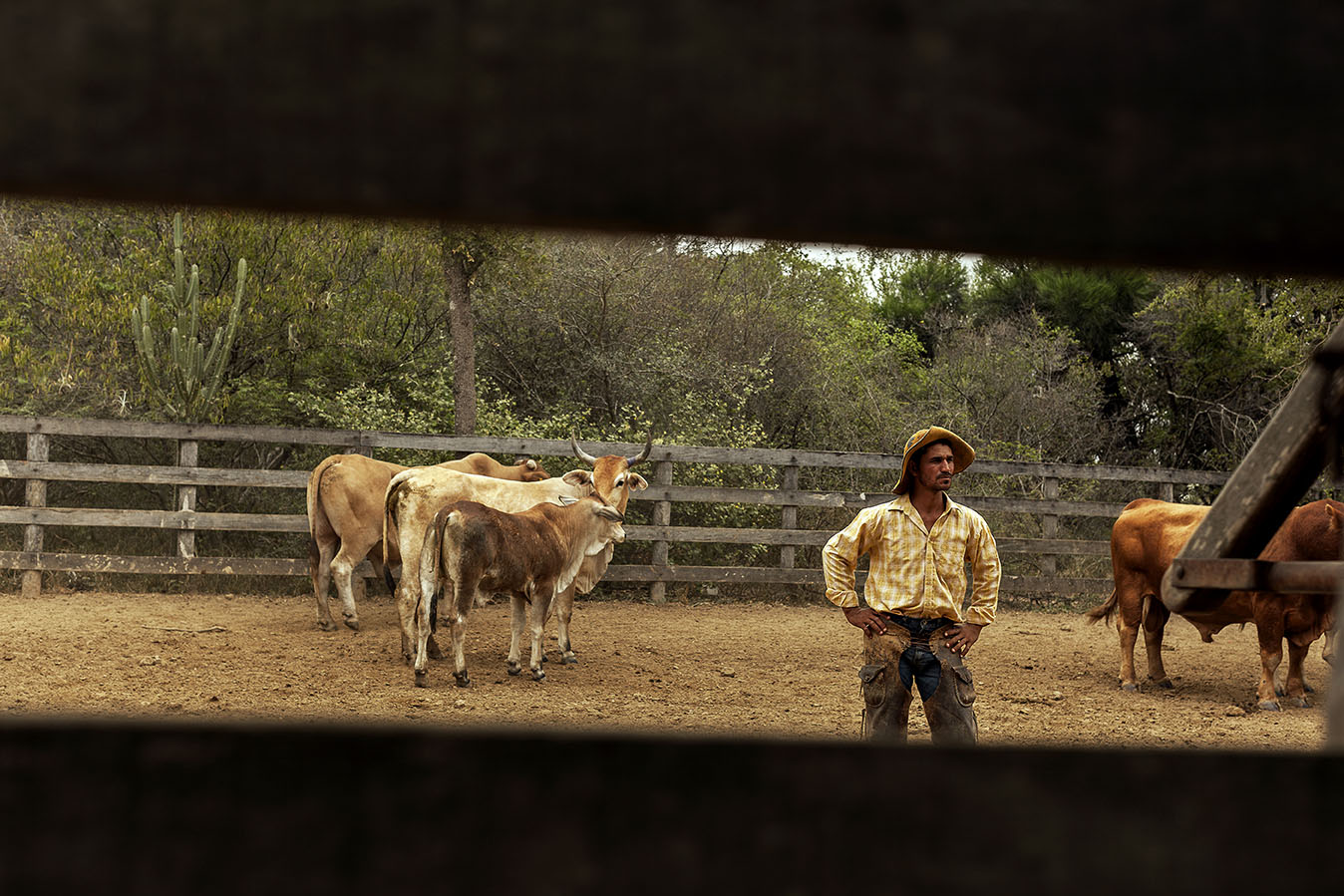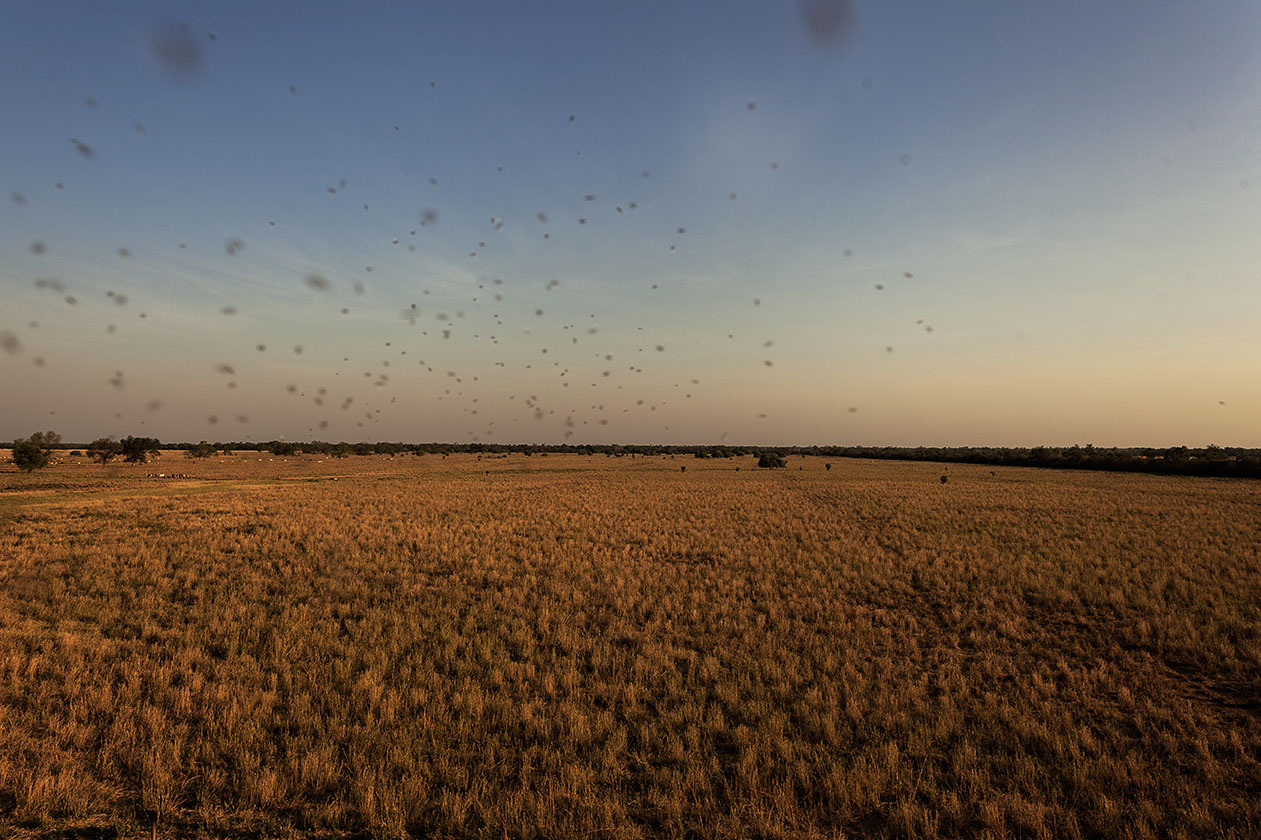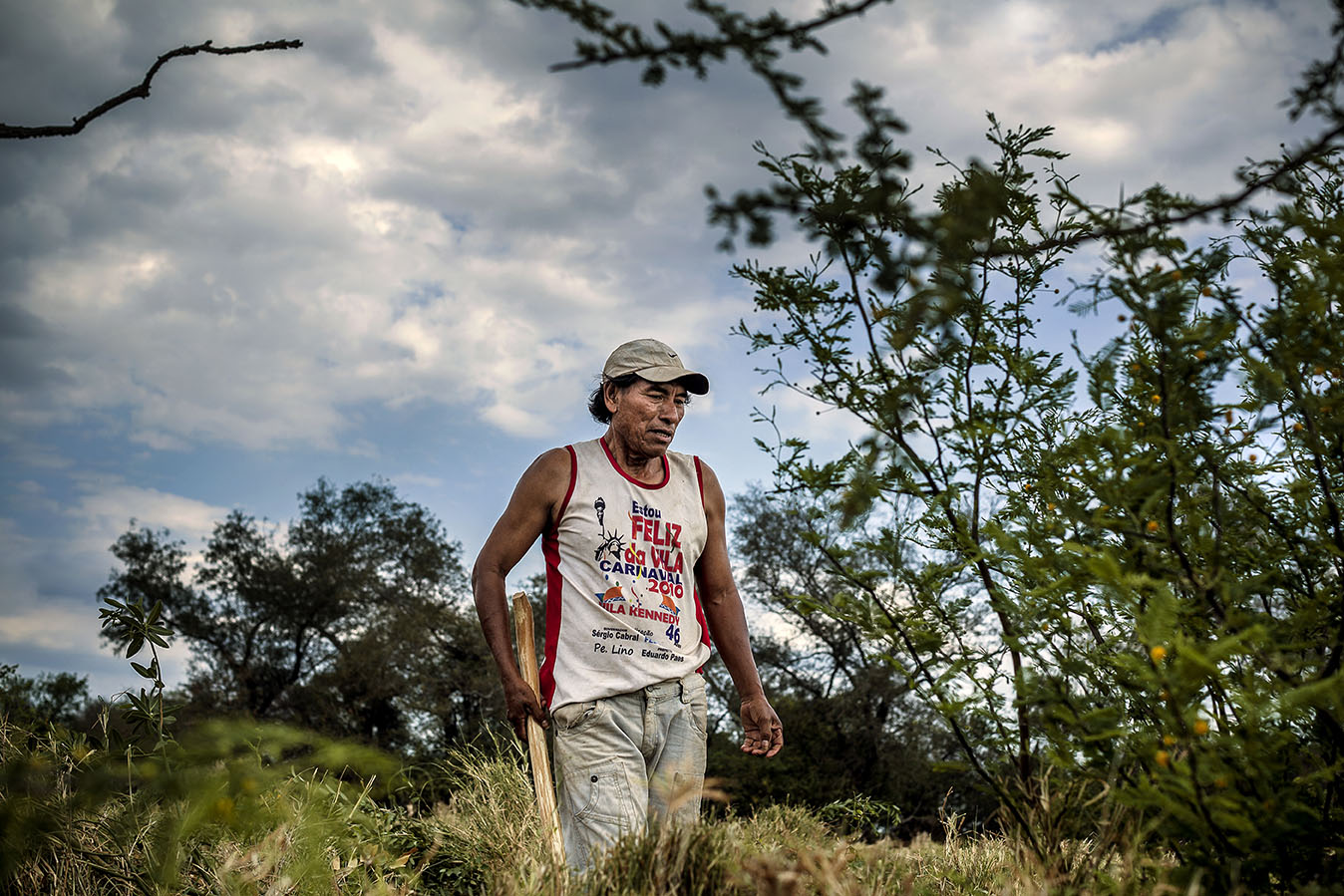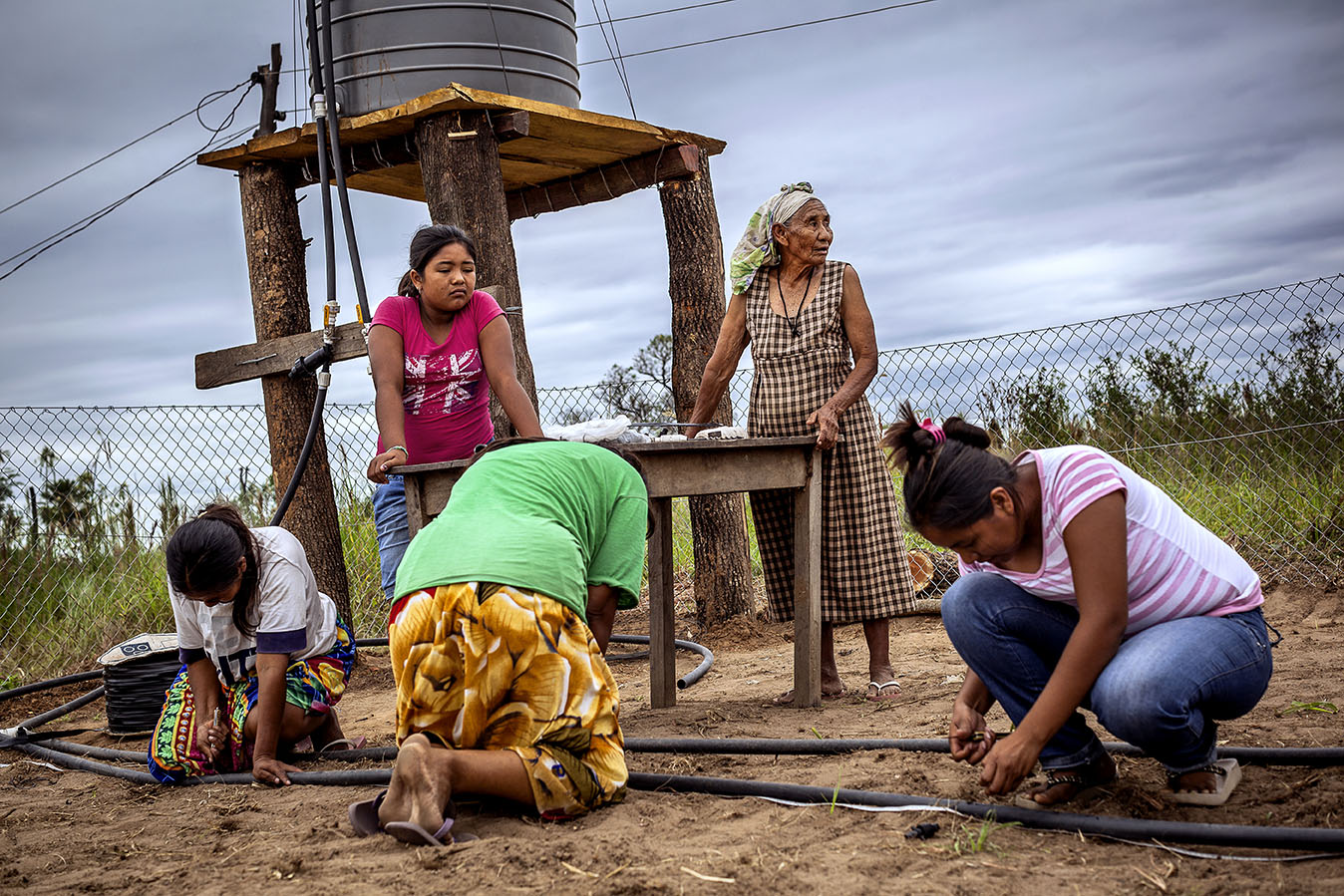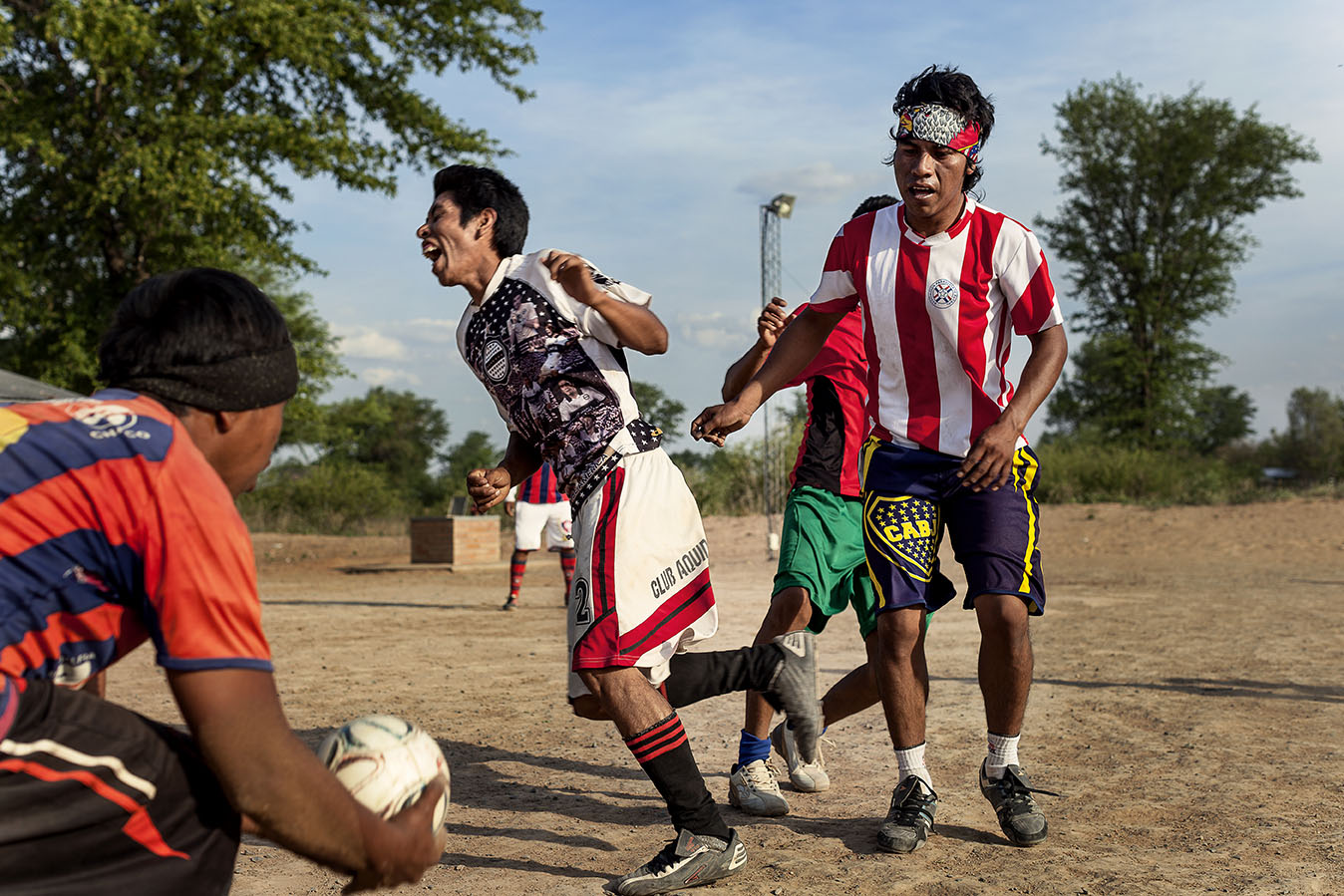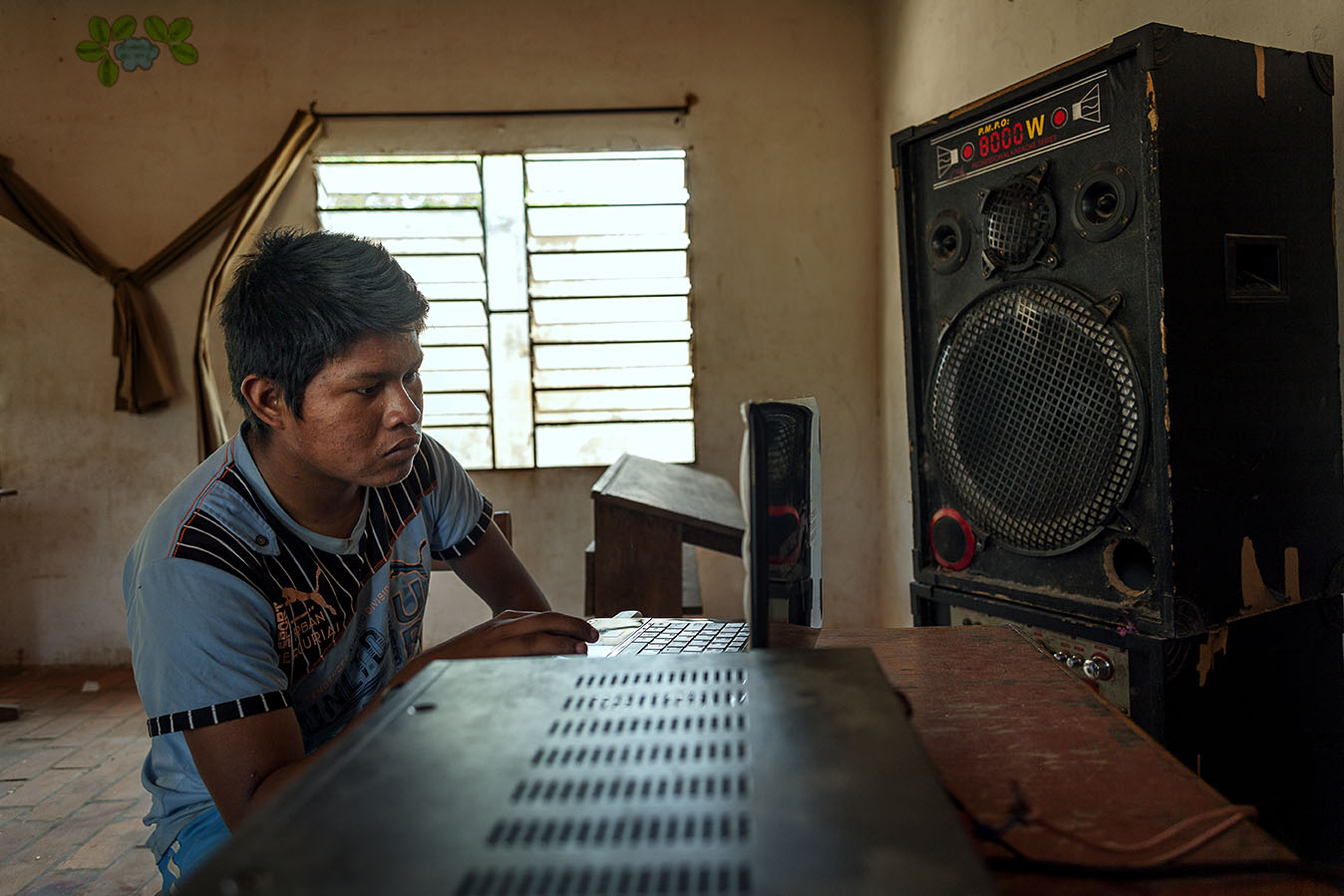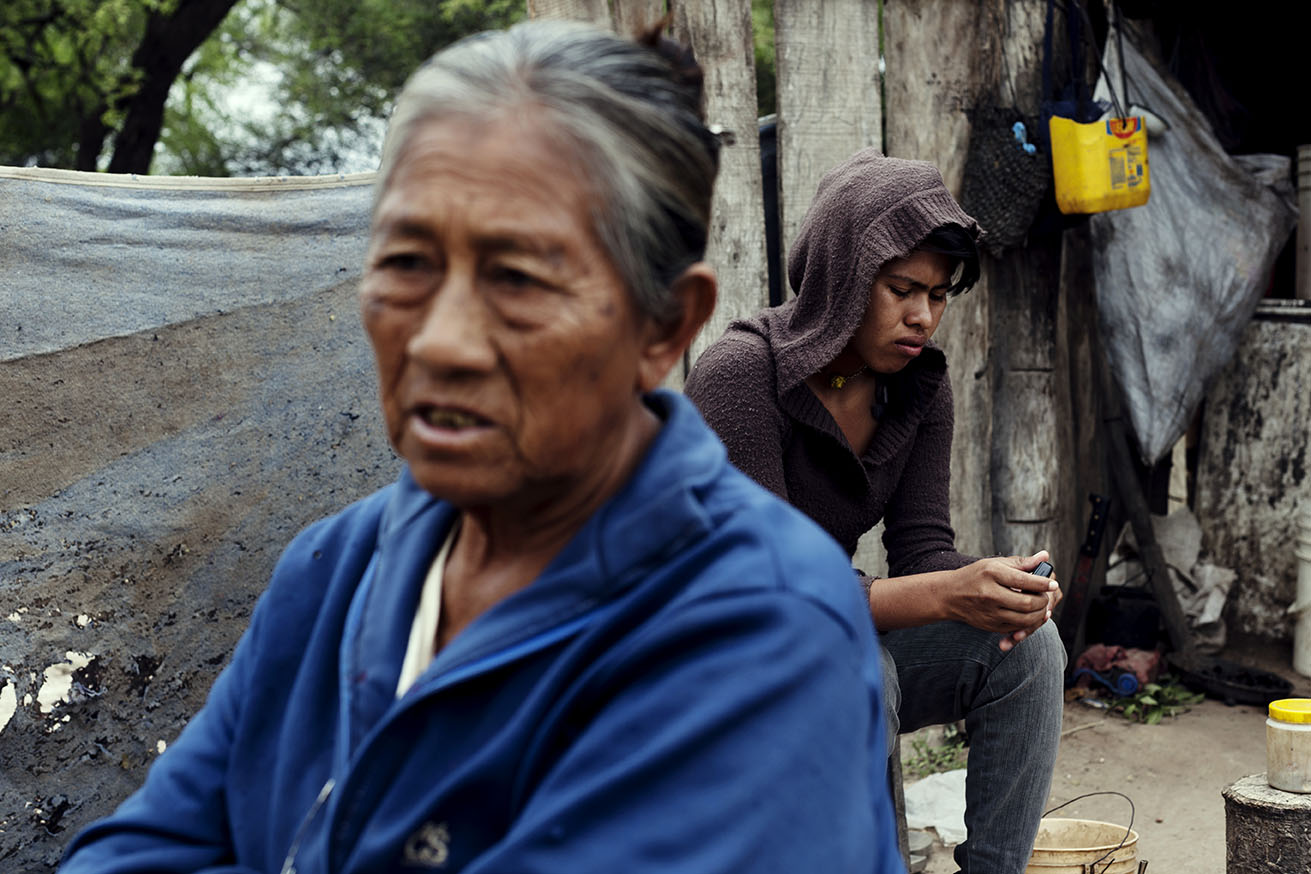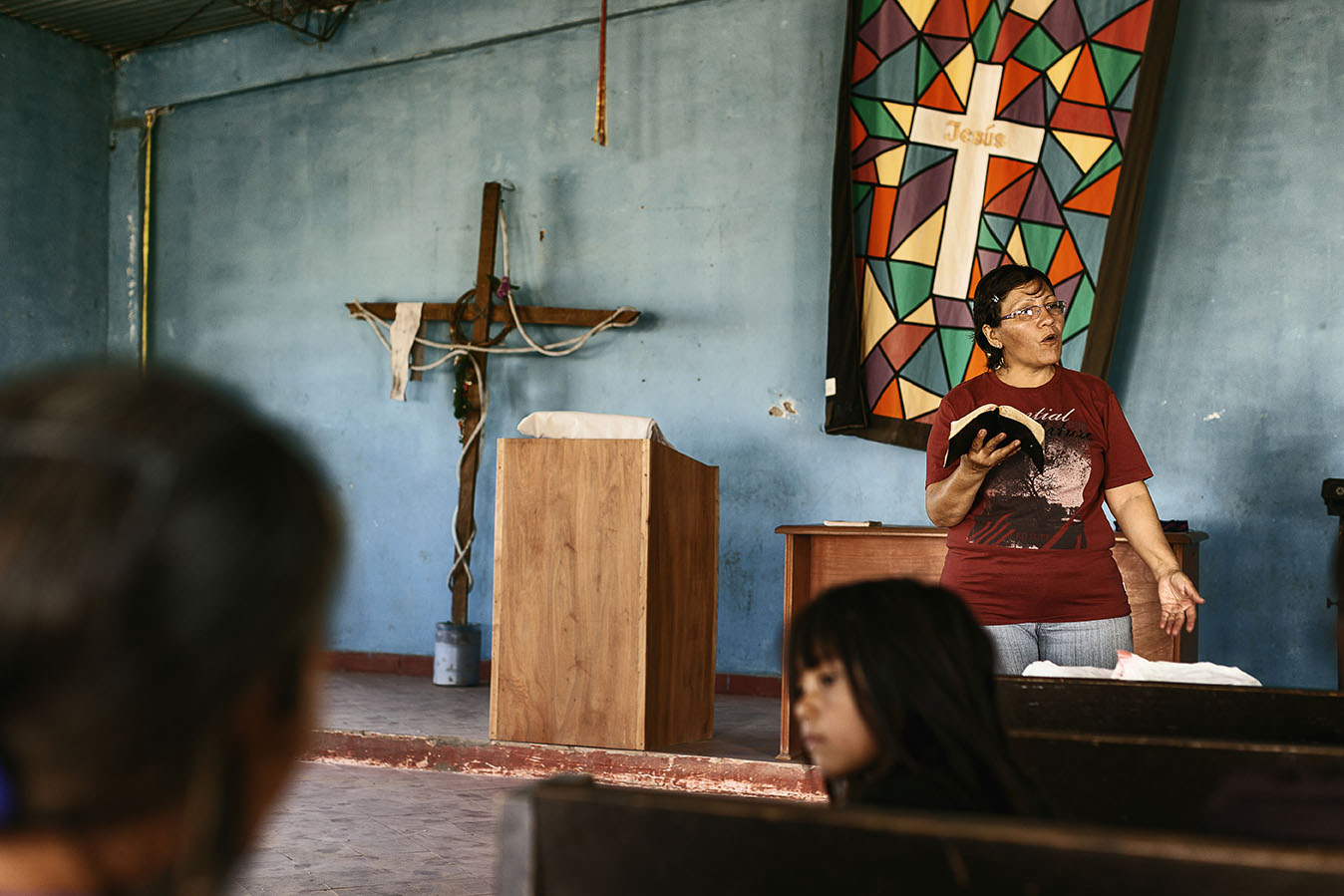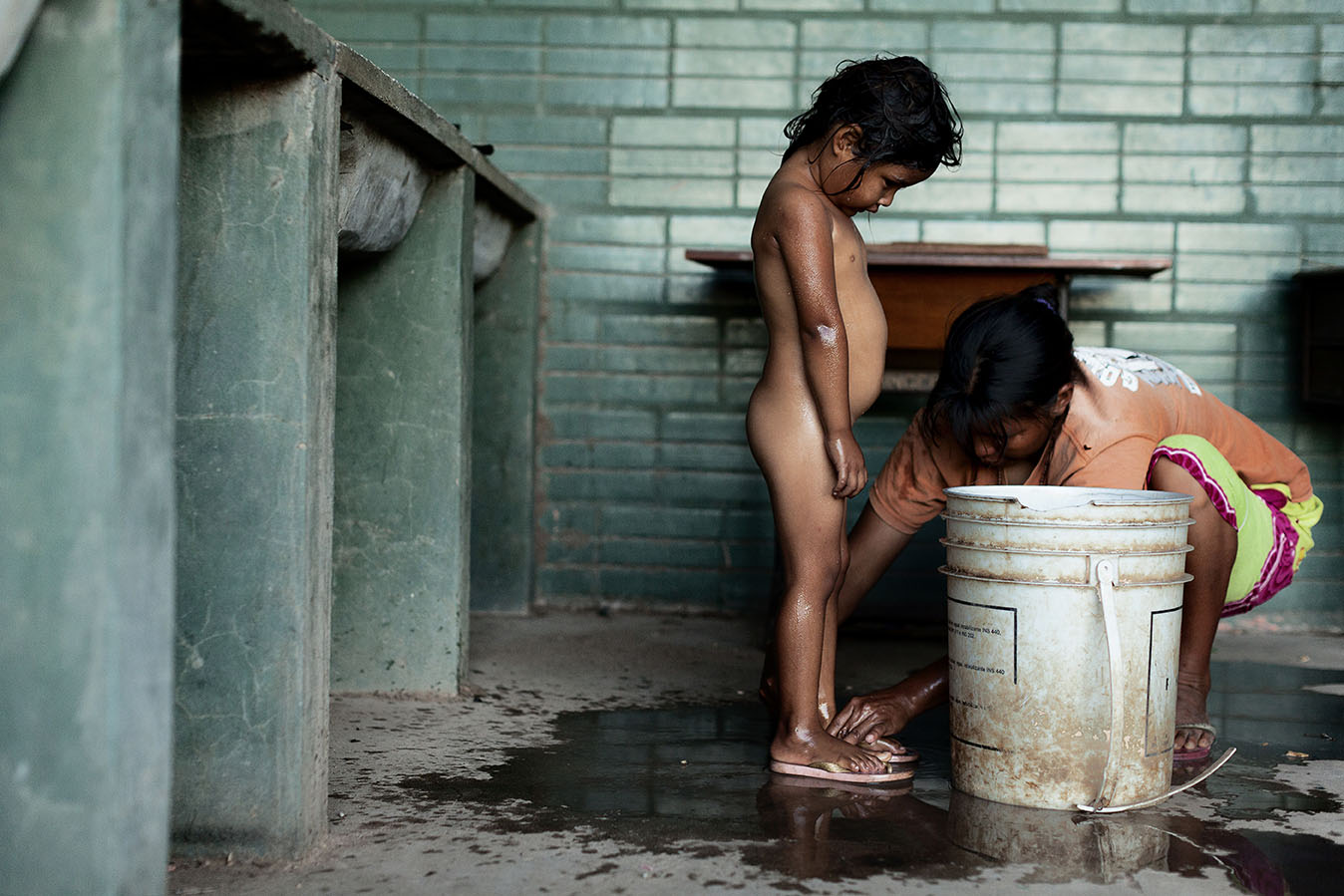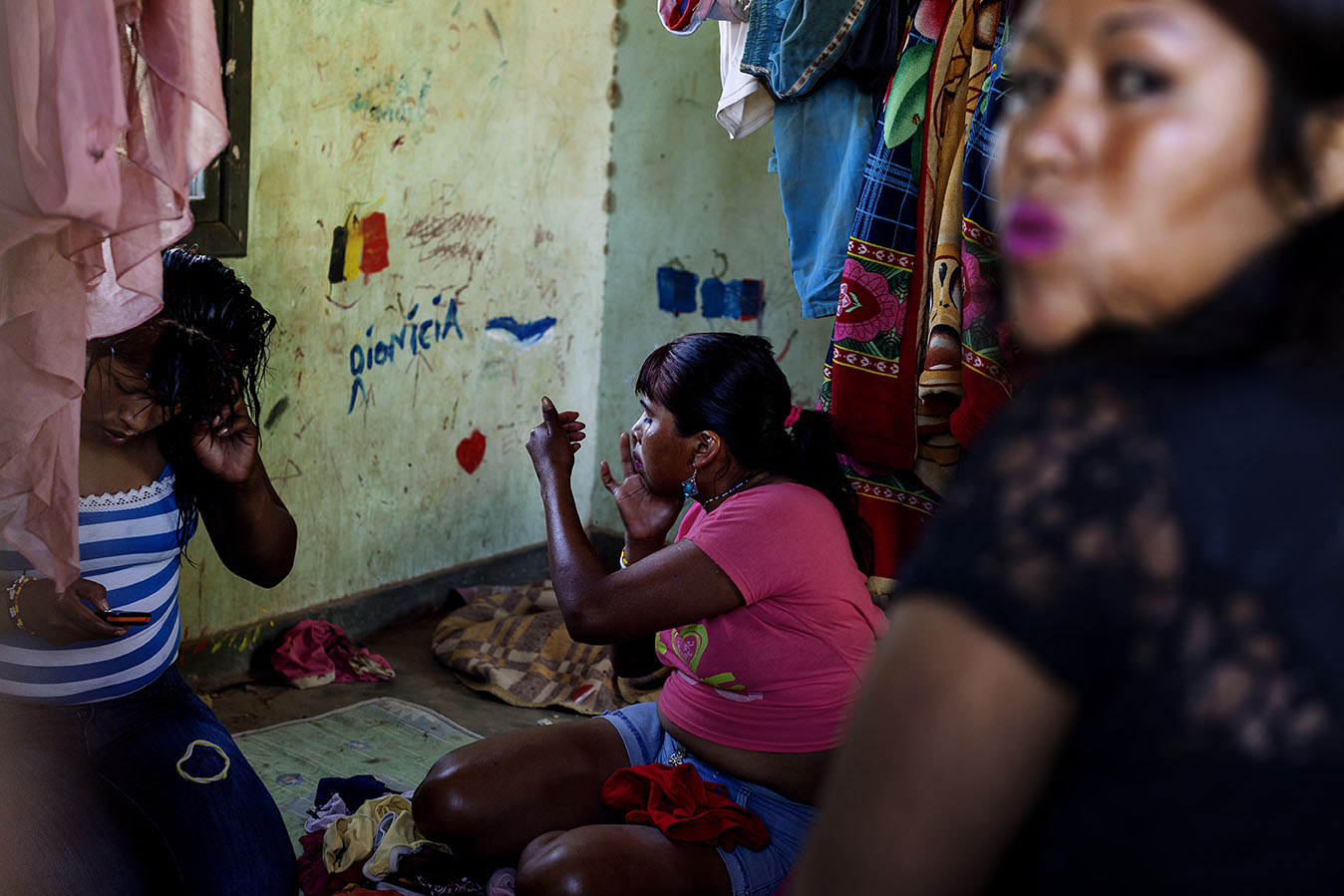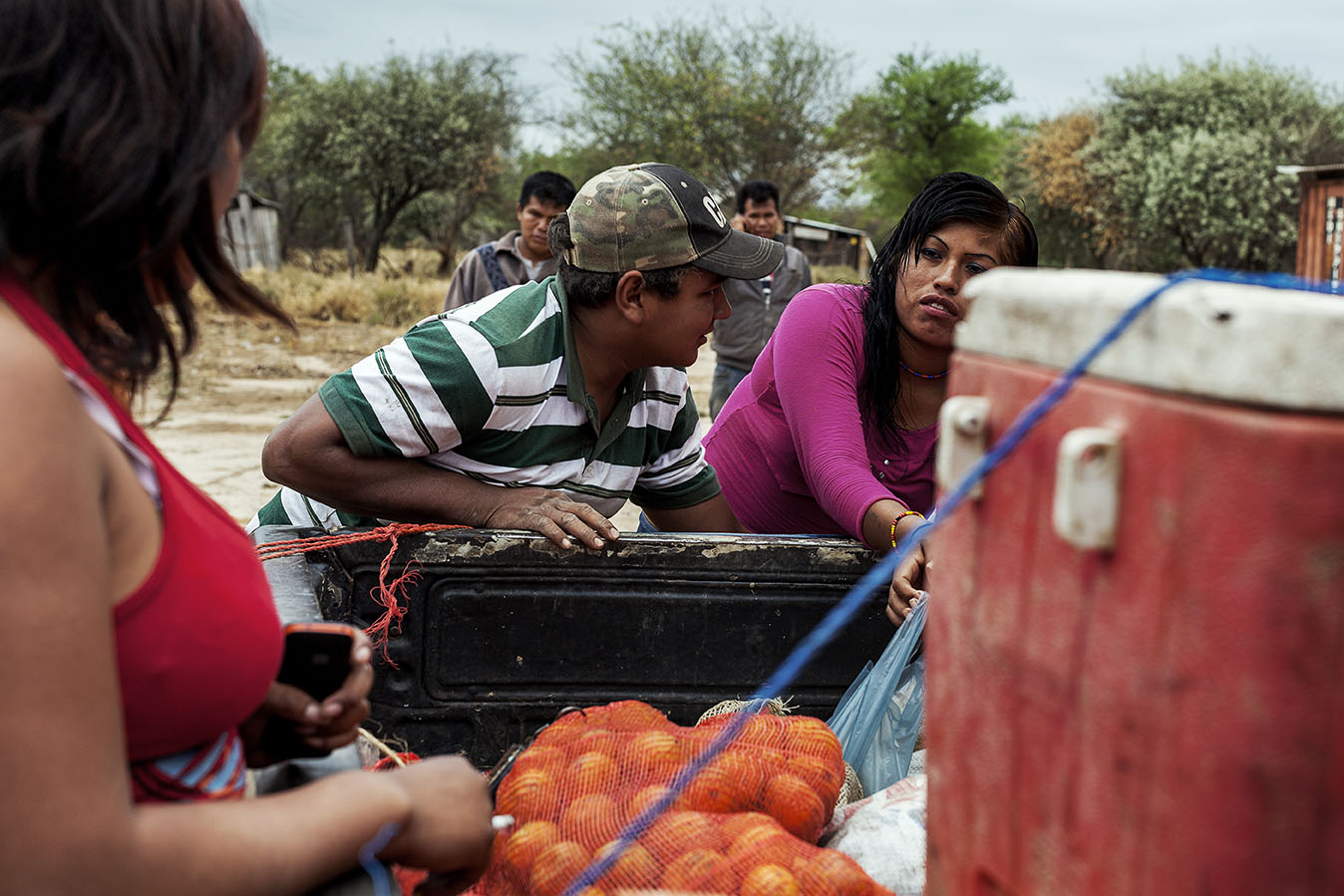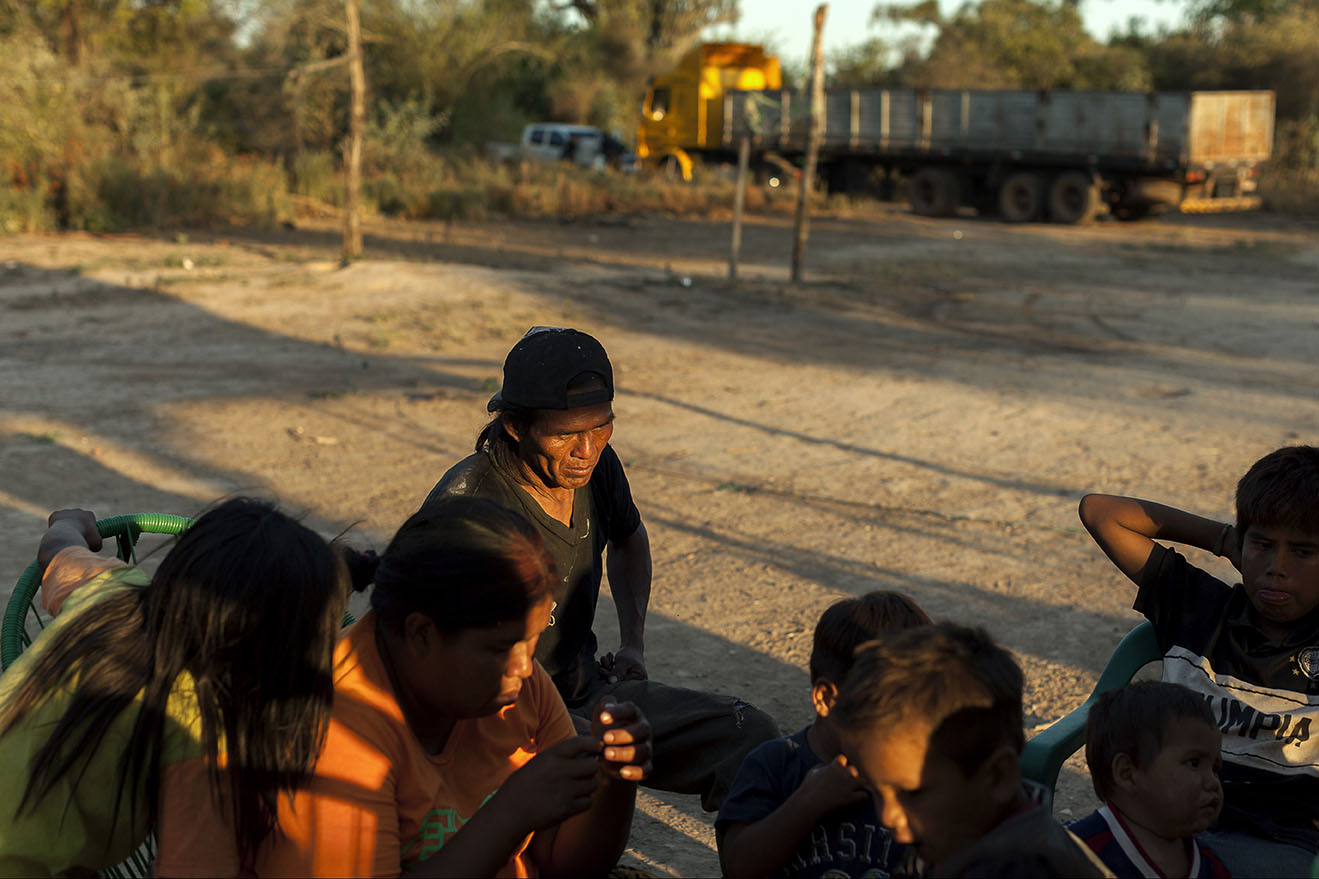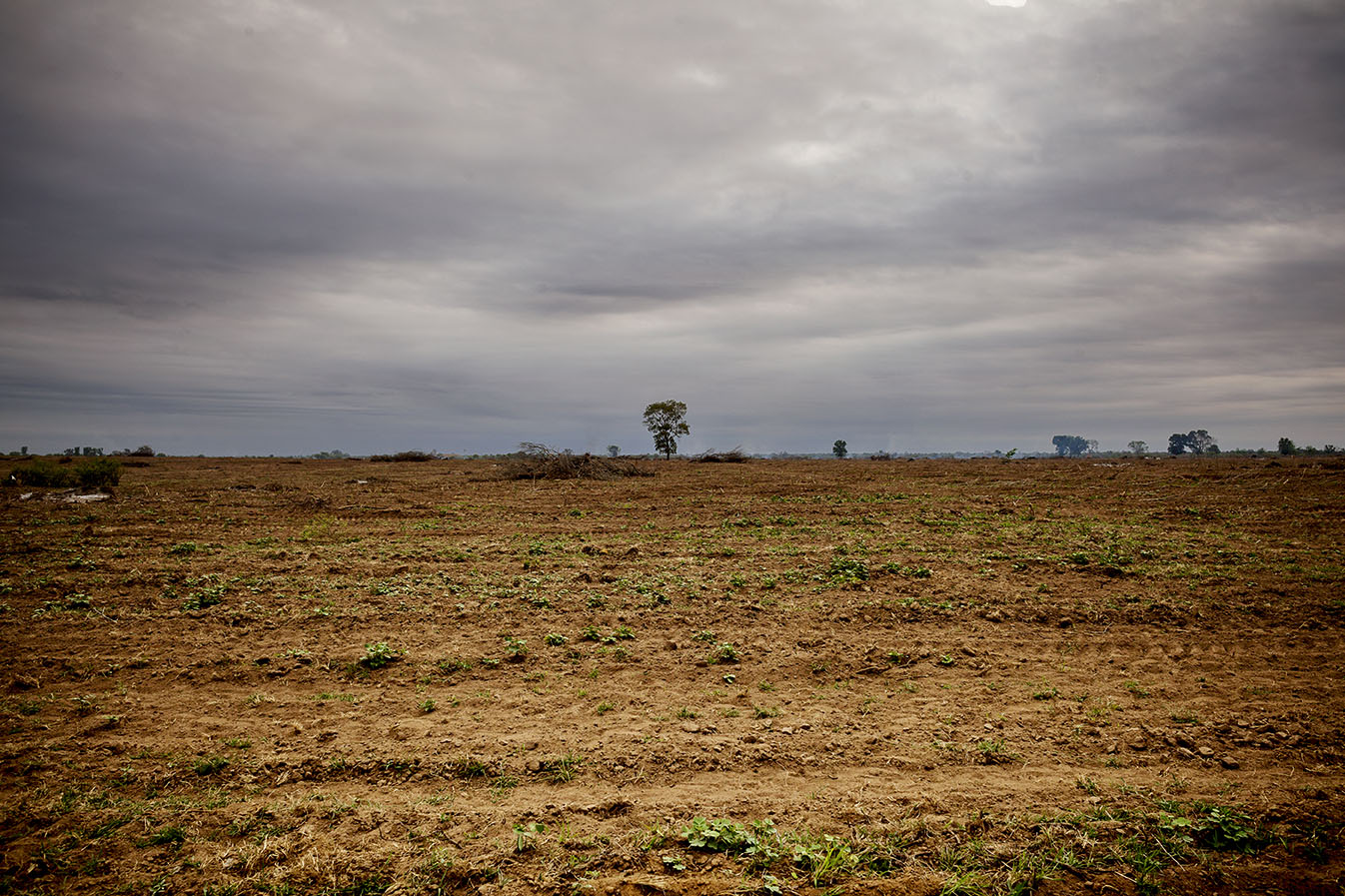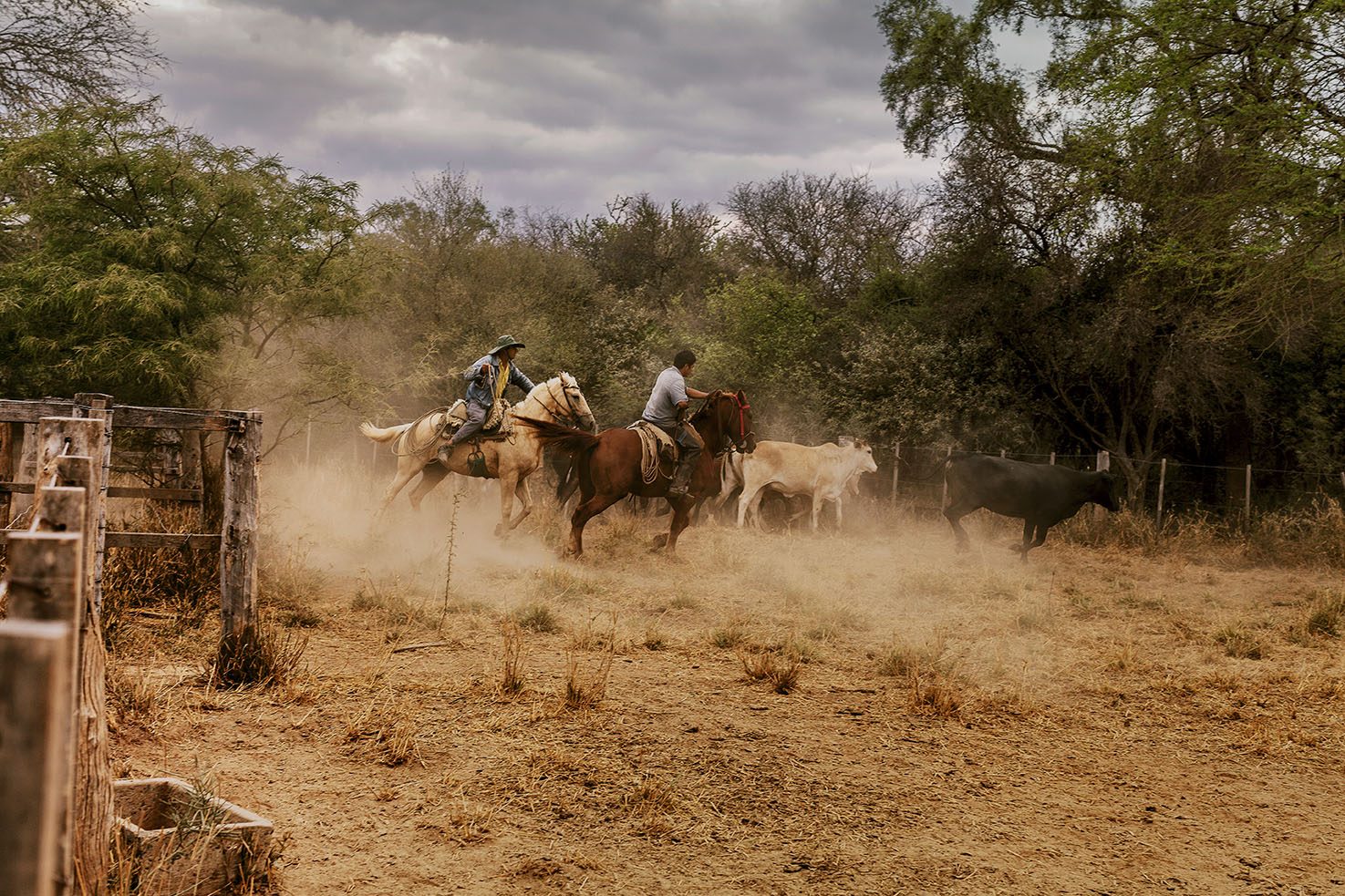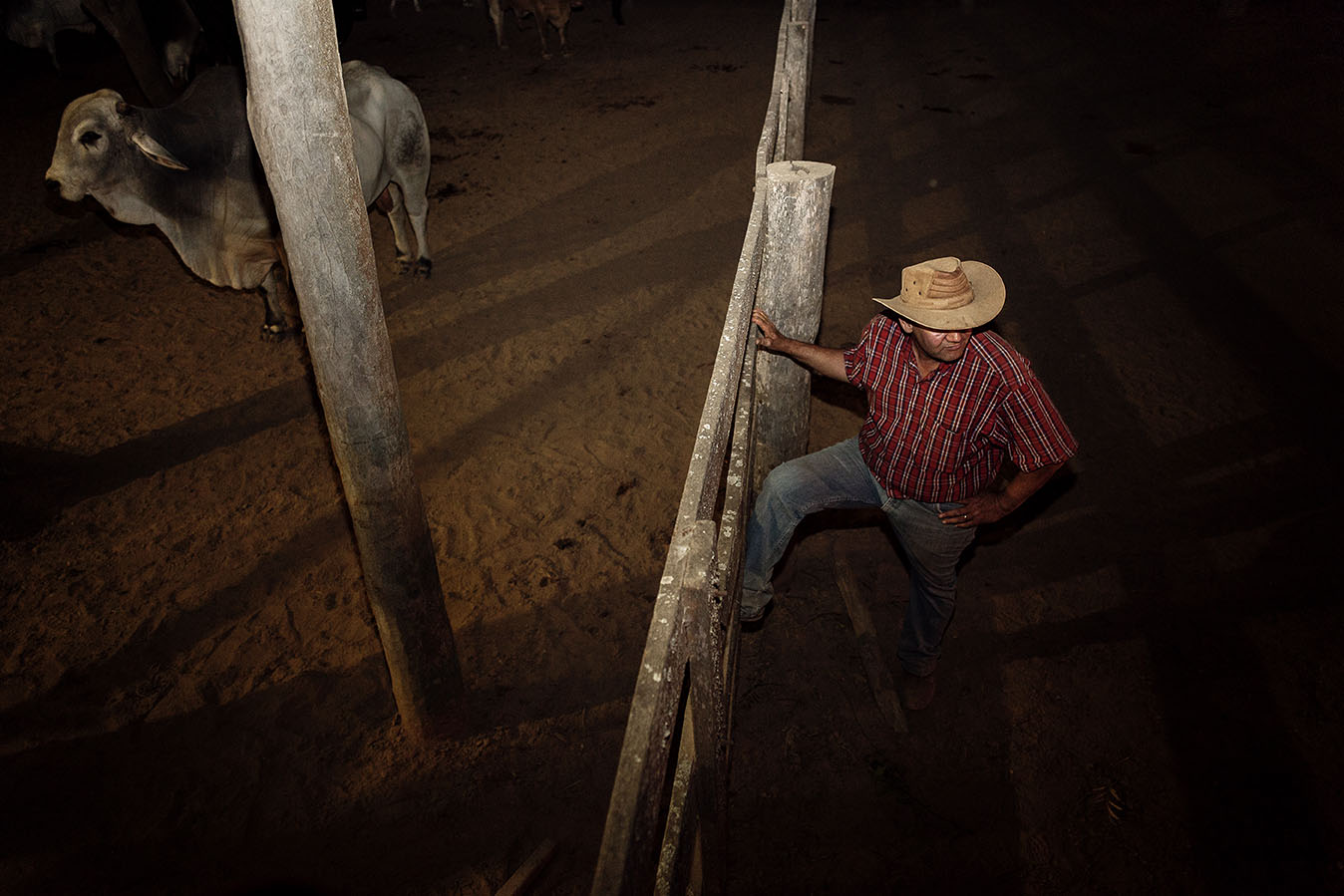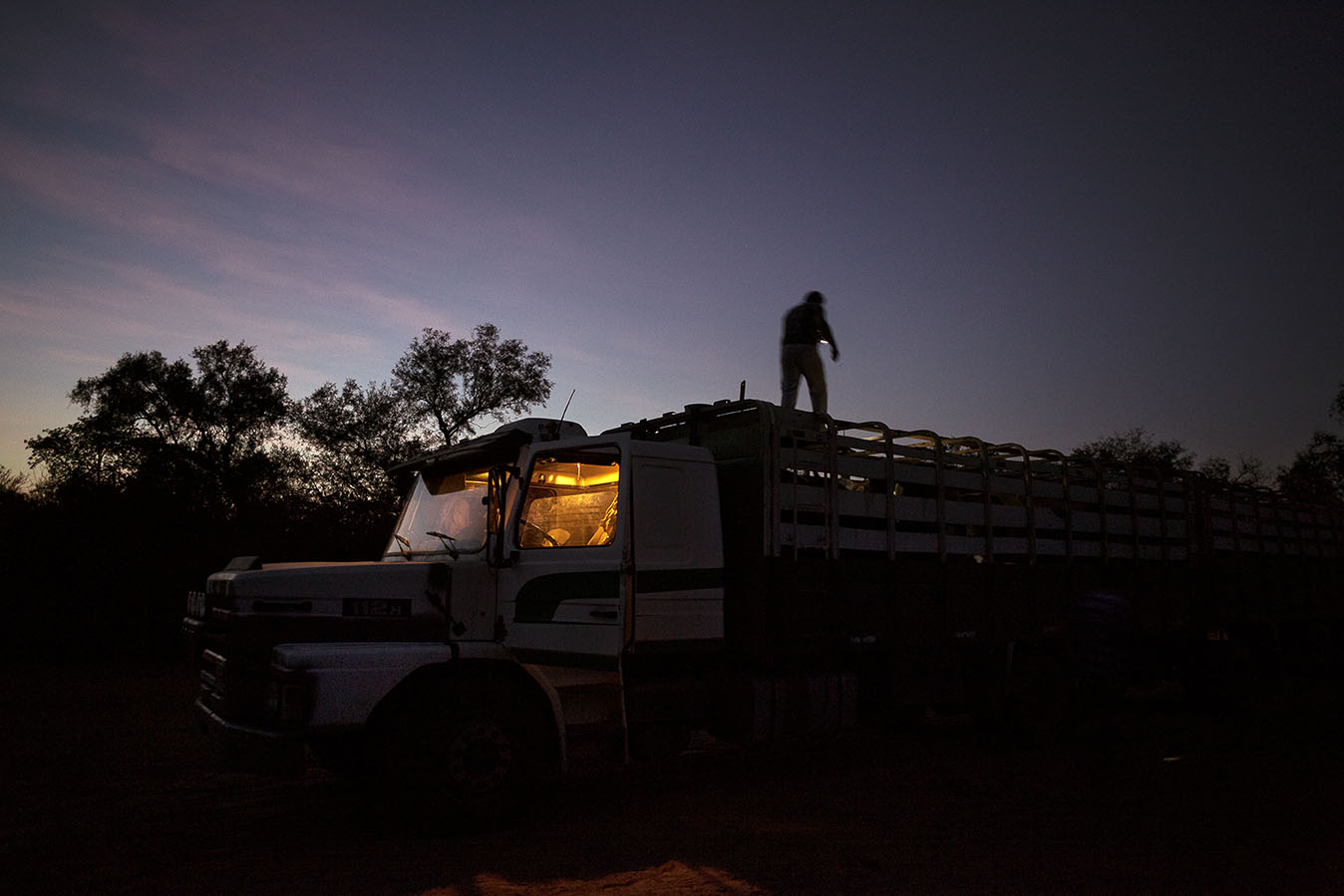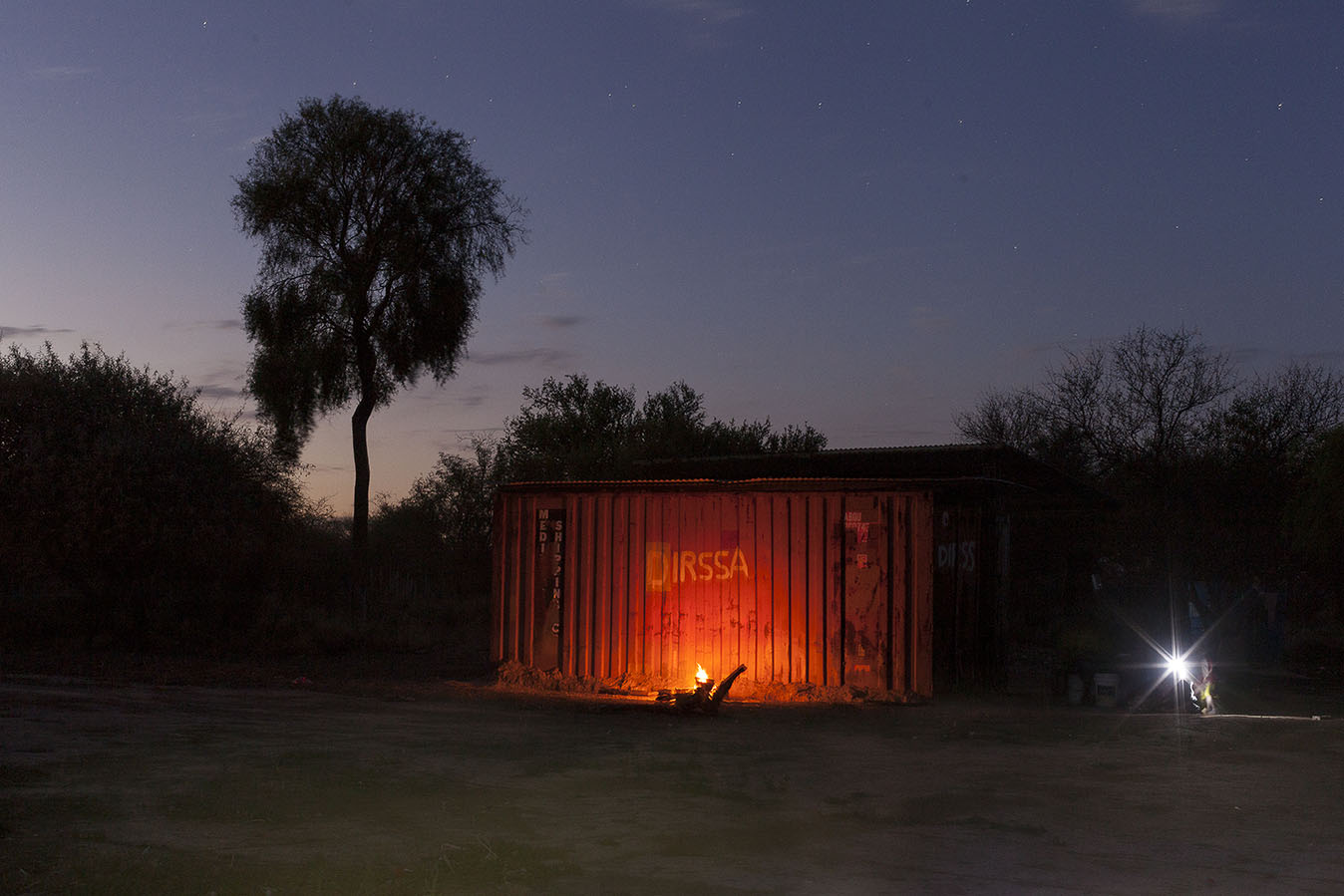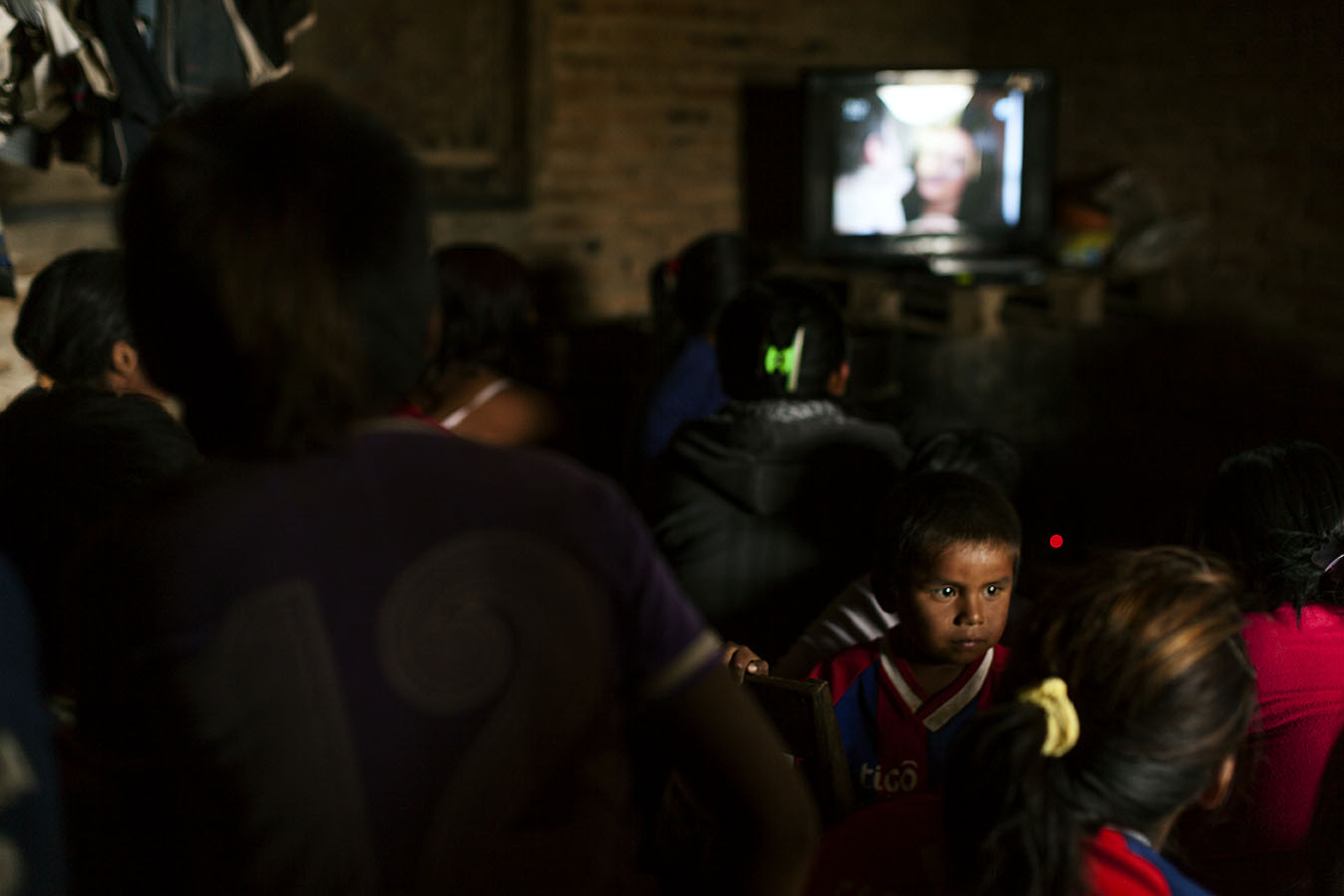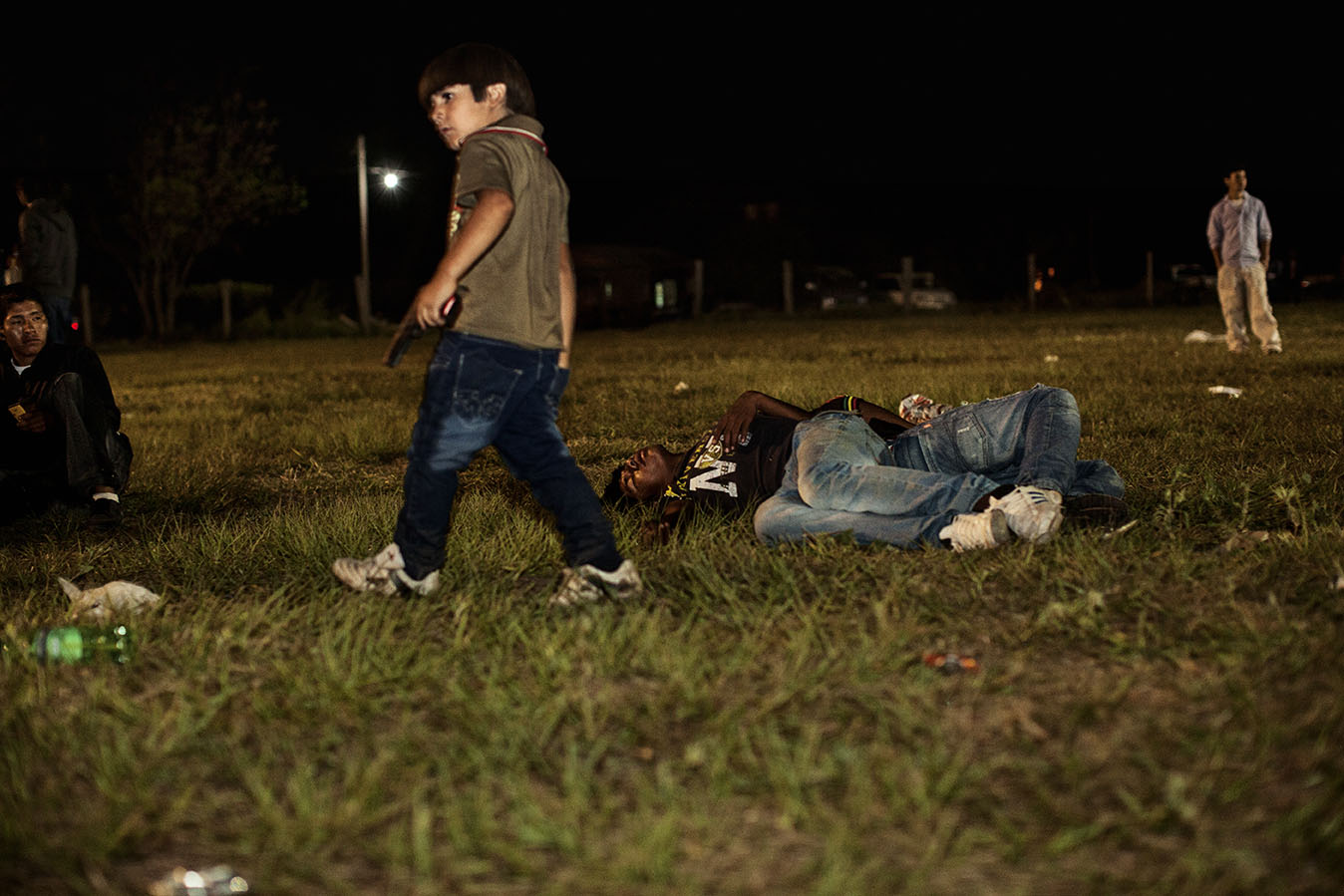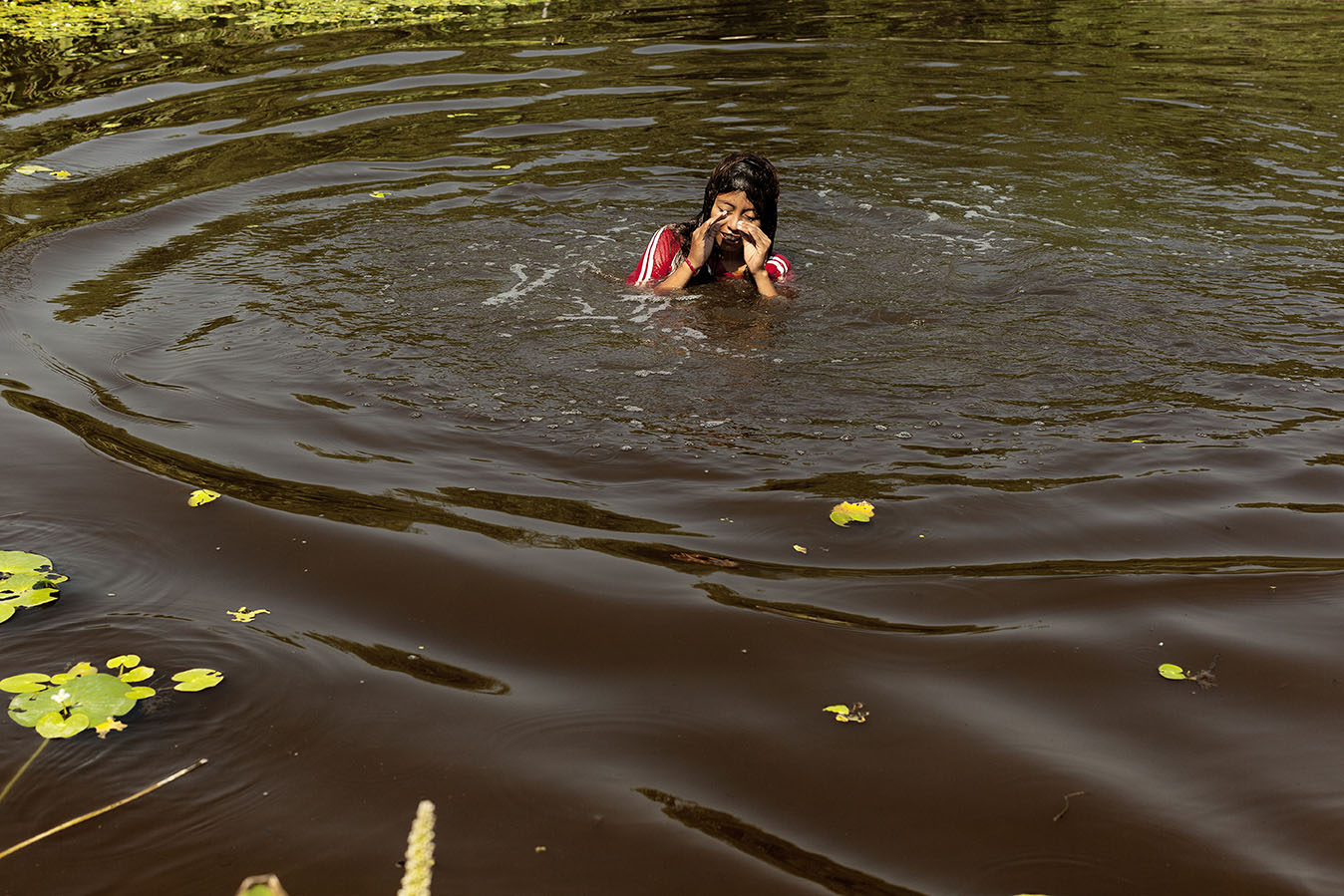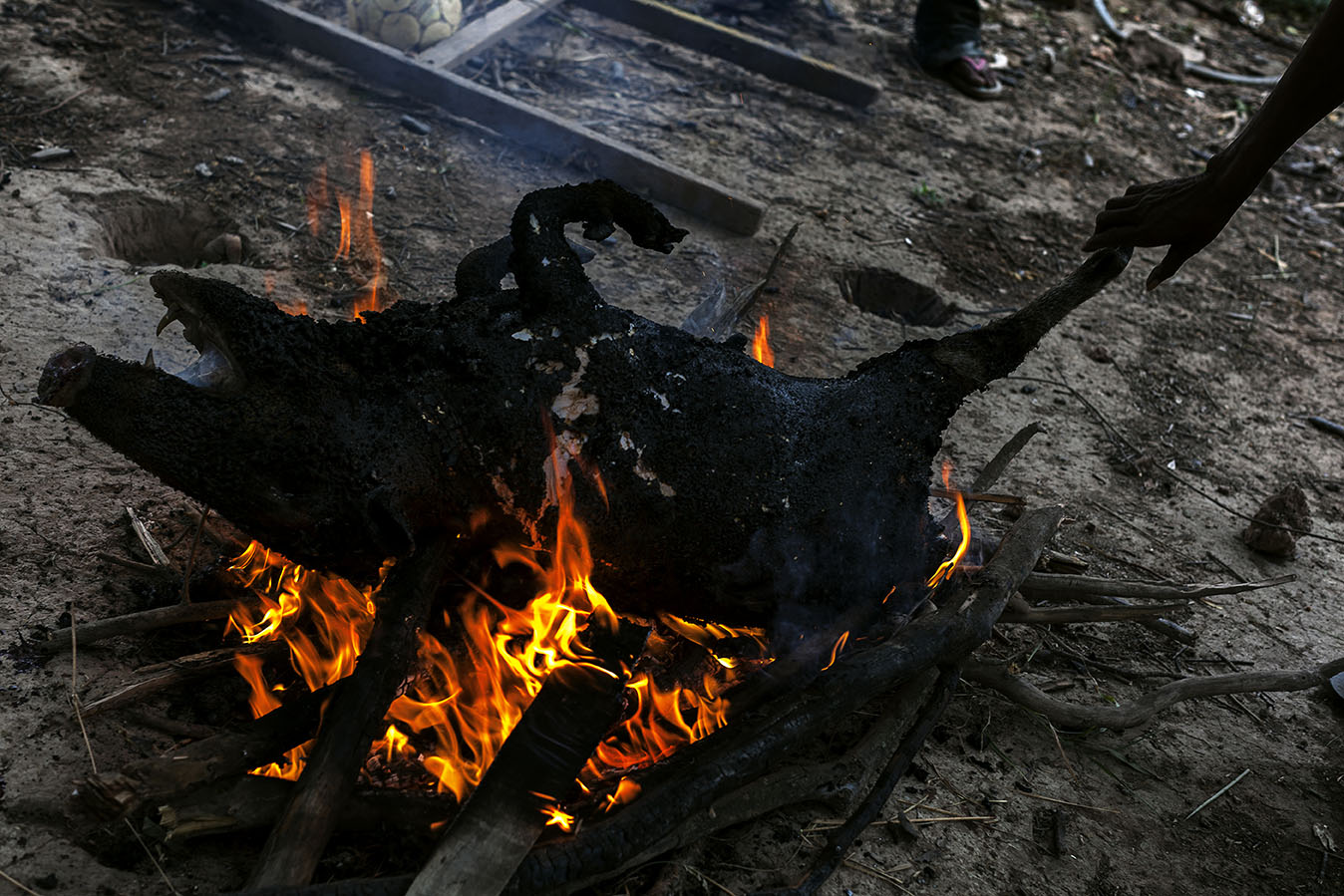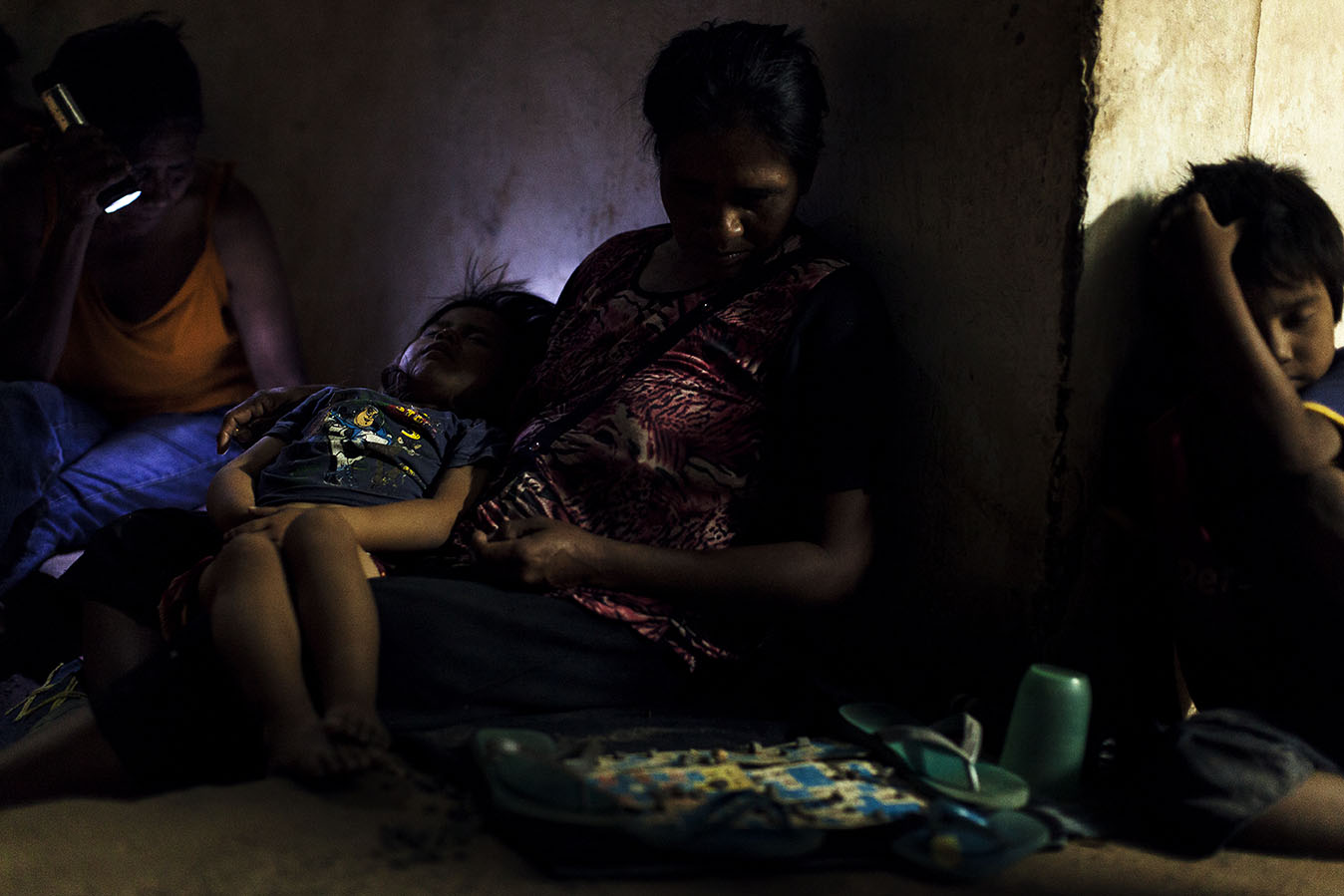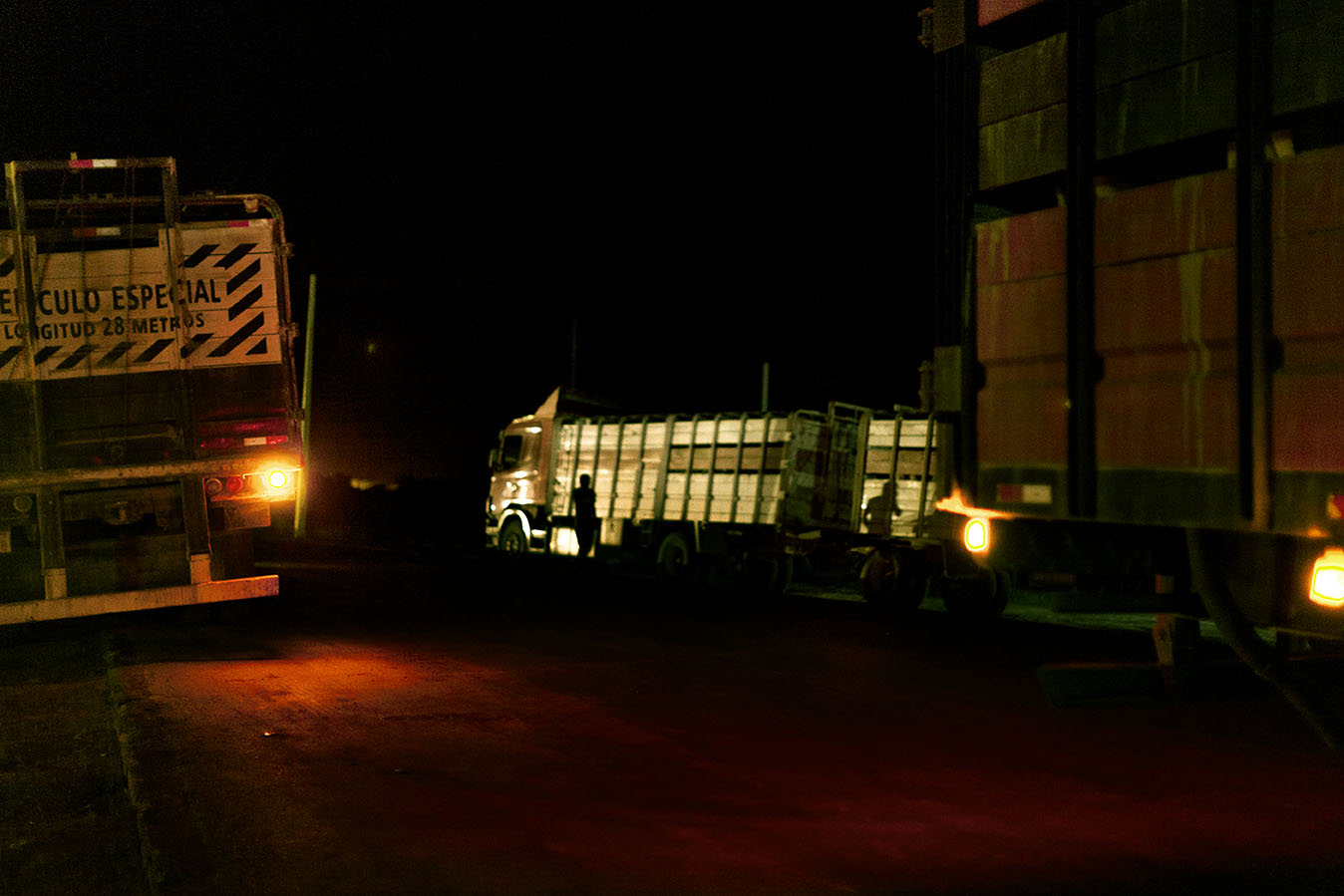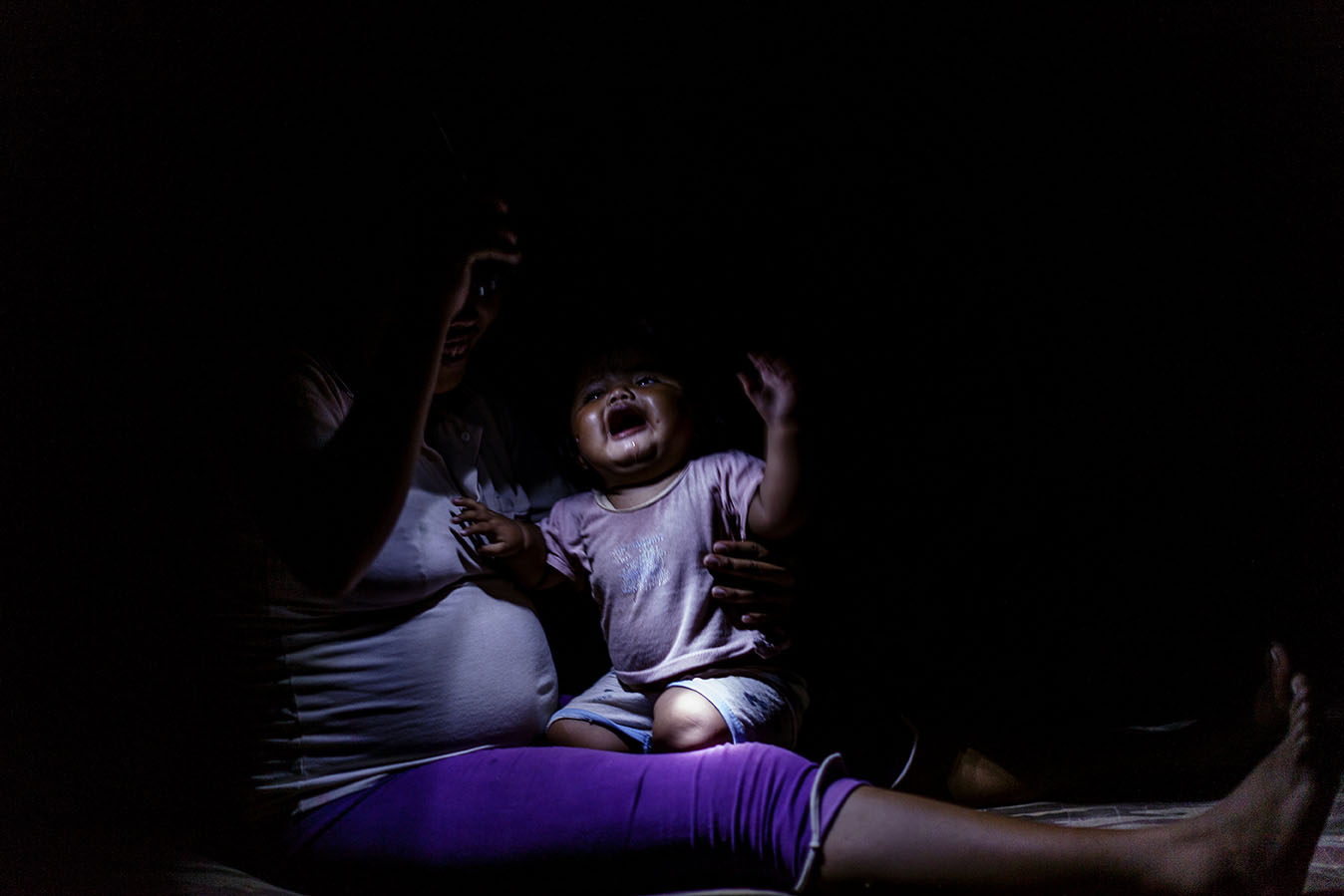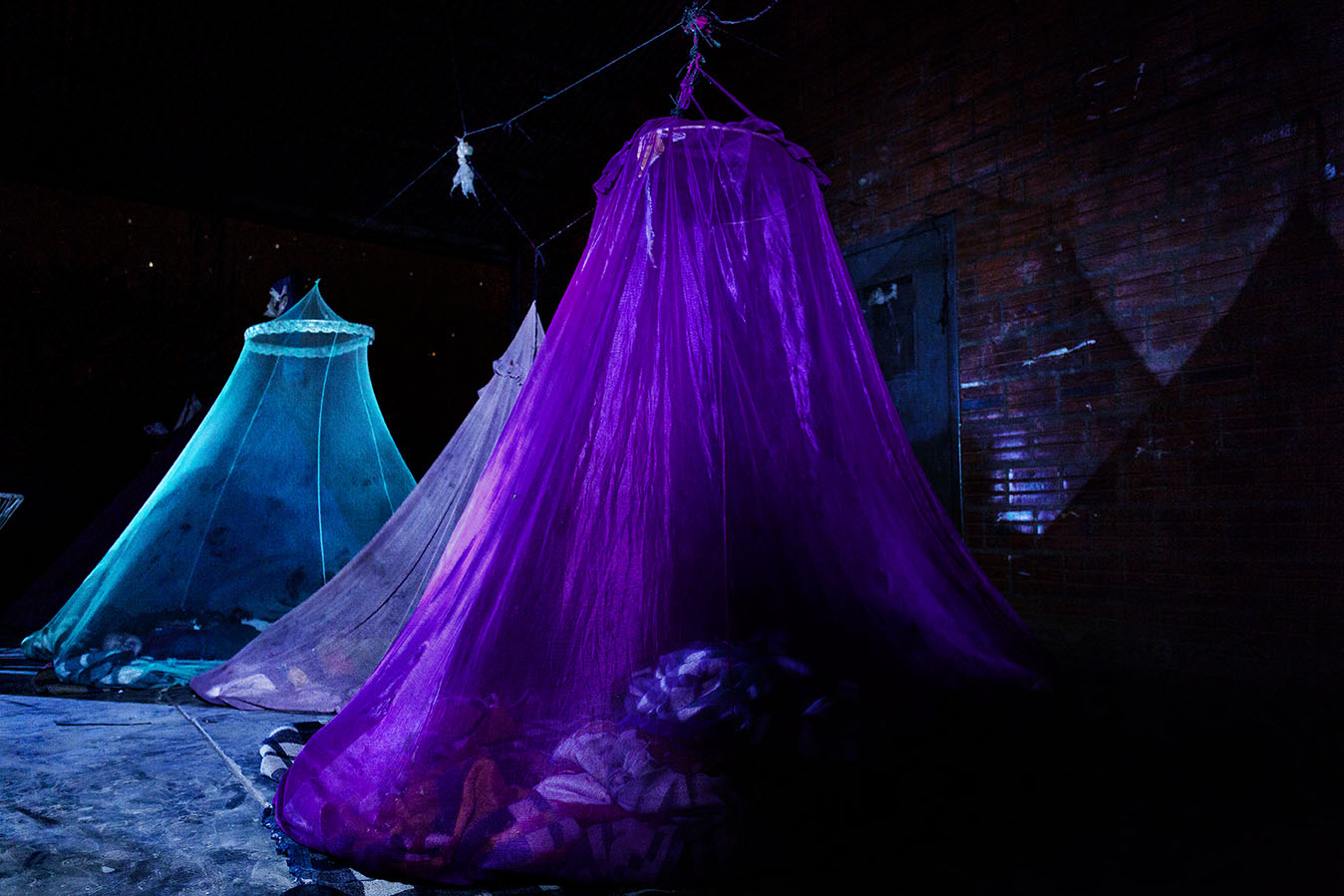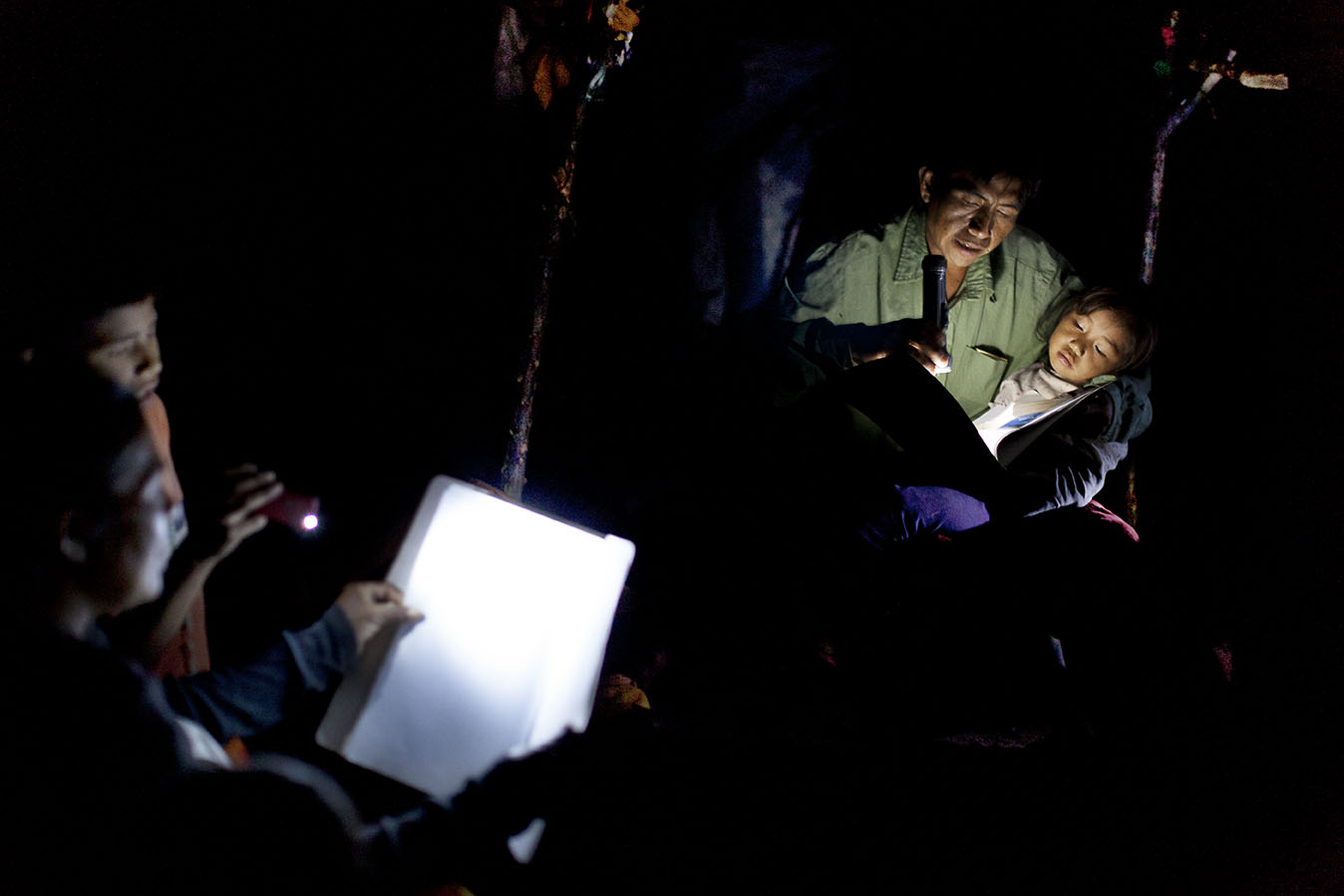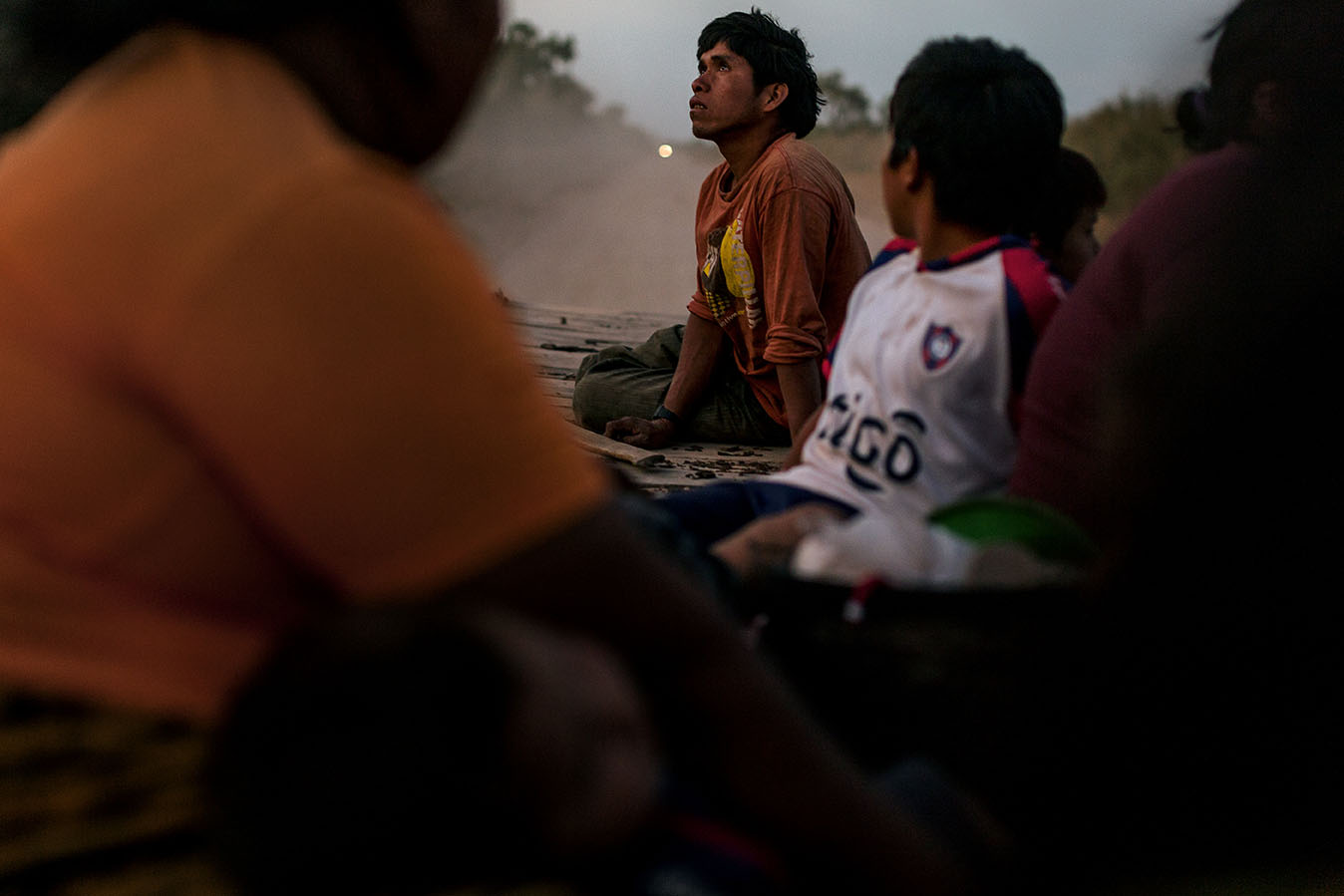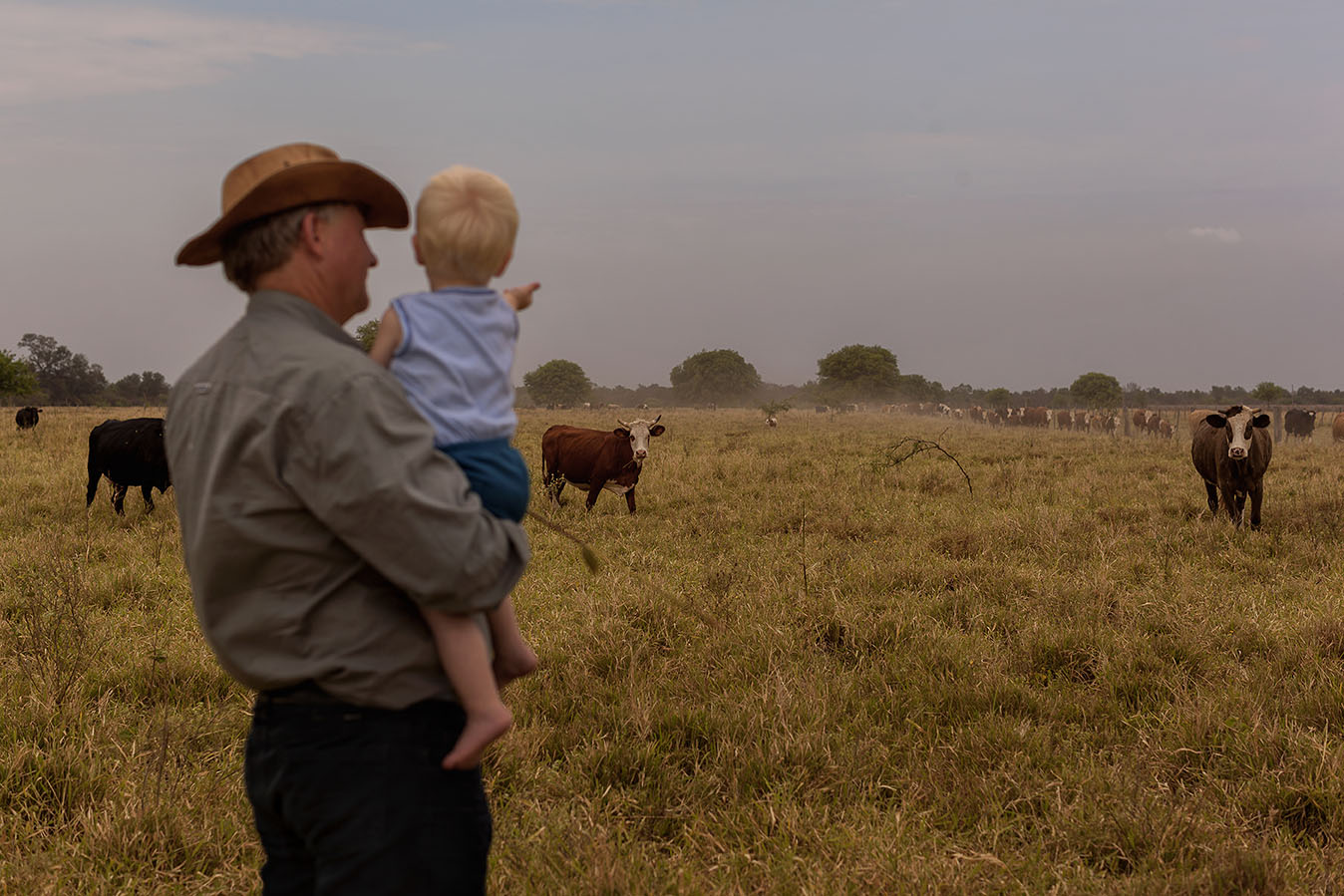Giada Connestari, photographe et pilote de drone environmental photography
Towards the City of the Whites, Paraguay
“Wake up and look at what I show you!
Get up and pay attention
to what is happening in the world!
Ashes and dust are the future
of the new generations.
A cloud of dust becomes visible.
I want to stop it,
Thwart it,
Protect our children against it.
But the Spirit of the Dust
Pushes me aside.
Like a suction, he pulls the children away
Towards the City of the Whites.
They don’t hear me anymore.
They paint their faces,
And their true face becomes darker and darker.
It was one morning when this happened.”
Ibegua’ s vision, April 2007, Campo Loro
© Benno Glauser, Iniciativa Amotocodie
Before the coming of white man, Chaco was an uncontaminated region covered by forest. Fourteen indigenous ethnic groups inhabited there. They lived by hunting, harvesting fruits, honey and medicinal plants, free to move from a place to another following the rhytm of seasons and rainfall regime. A complex mythology explained very precisely how to maintain this perfect balance between nature and mankind.
The first colonization took place in the early 30’s by a group of Mennonites coming from Russia. A few years later, Chaco became the theater of a war between Paraguay and Bolivia and a violent smallpox epidemic brought by soldiers killed almost half of the indigenous population in less than a month. At the end of war, Mennonites were well established: they occupied the strategic water access points and built enclosures to mark their own landed properties, developing over time a ranch business model adapt to a semi-arid climate. All at once, different groups of missionaries arrived in Chaco to spread their own religion and civilization, and to bring the natives out of the forest. In the late 50’s, after twenty years of cultural and territorial resistance, most of the indigenous communities had been baptized and had left the forest to embrace the colonizers’ lifestyle.
During the last decade, the rise of meat world market converted the region in one of the most important world producer of cow, exported mainly in Russia and Chile. Natives have been displacing and dwell onto reservations far from their ancestral territories which have been mostly deforested and intended to the cattle extensive farming. Forced to become sedentary and confined within an “Indian reservation”, native communities lost all their traditional livelihoods. Nowadays natives work as laborers for the landowners. The oral transmission of their own culture has been interrupted since all their knowledge was strictly connected with a natural world that is disappearing. Without the chance to experience the forestry lifestyle nor shamanism, young generation are even more attracted by the western costumes that have been introduced massively in their daily life.
Toward the City of the White focused on the cultural side effects of globalization. Expropriated from their owns territories due to the economic interests over natural resources, aboriginal civilizations, ever connected with nature, risk to be extinguished in favor of modernity.
1 octobre 2020 | Filed under REPORTAGES PRESSE and tagged with Chaco, Colonization, Deforestation, Desertification, drought, Extensive farming, Food Insicurity, Food Security, Globalization, Meat, Mennonite, Missionary, Modernity, Native, Neocolonization, poverty, Religion, The Great American Chaco, Water Issue.
Étiquettes : Chaco, Colonization, Deforestation, Desertification, drought, Extensive farming, Food Insicurity, Food Security, Globalization, Meat, Mennonite, Missionary, Modernity, Native, Neocolonization, poverty, Religion, The Great American Chaco, Water Issue
ARCHIVIO
- mai 2021 (1)
- octobre 2020 (1)
- août 2020 (1)
- juillet 2020 (1)
- mai 2020 (1)
- avril 2020 (2)
- mars 2020 (1)
- février 2019 (1)
- janvier 2019 (3)
- octobre 2017 (2)
- septembre 2016 (1)
- août 2016 (1)
- juin 2014 (2)
- mai 2014 (1)
- avril 2014 (1)
- mars 2014 (1)
- décembre 2013 (1)
- novembre 2013 (1)
- octobre 2013 (1)
- septembre 2013 (1)
- juillet 2013 (1)
- juin 2013 (1)
- avril 2013 (1)
- mars 2013 (1)
- février 2013 (1)
- décembre 2011 (1)
- mars 2010 (1)
- avril 2008 (1)
CERCA
Powered by WordPress using the F8 Lite Theme
subscribe to posts or subscribe to comments
All content © 2025 by Giada Connestari, photographe et pilote de drone
Connexion
